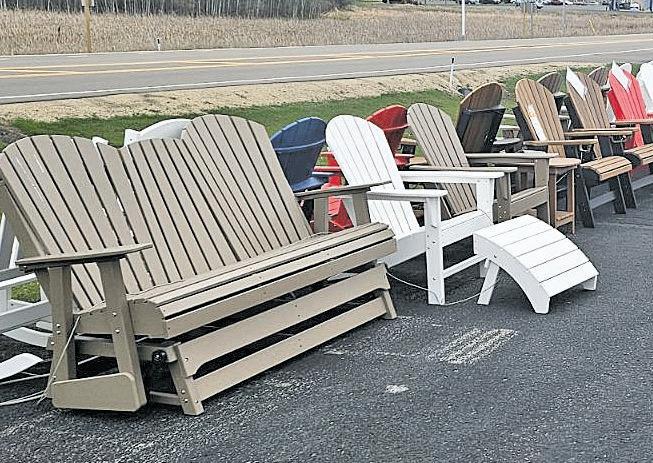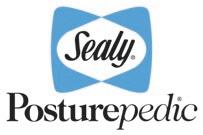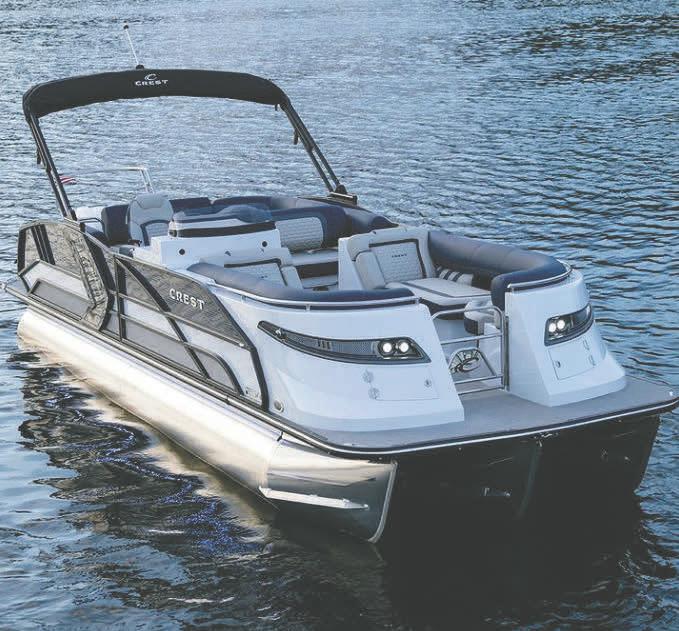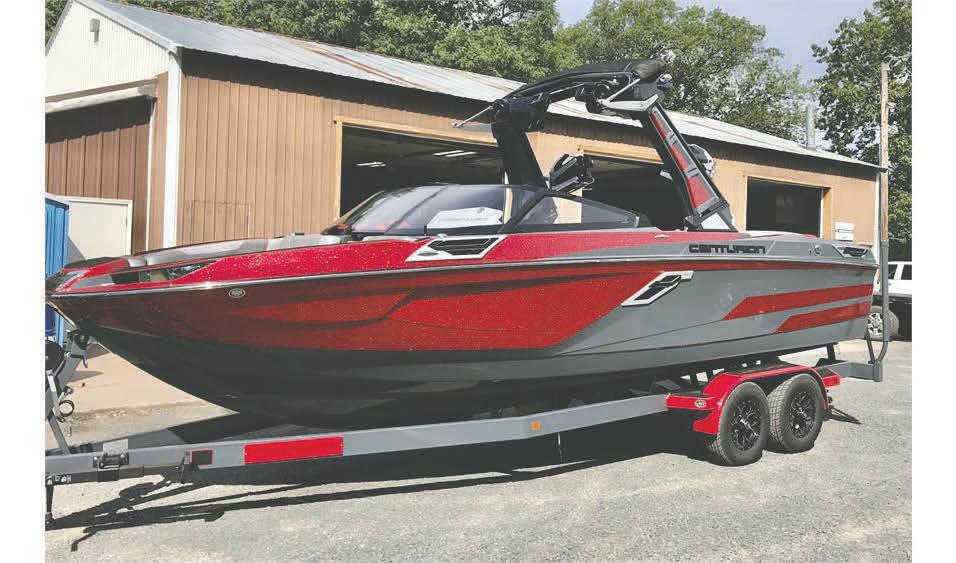L KER
Vol. 2024 • No. 3 • June 21 - July 4, 2024


Vol. 2024 • No. 3 • June 21 - July 4, 2024

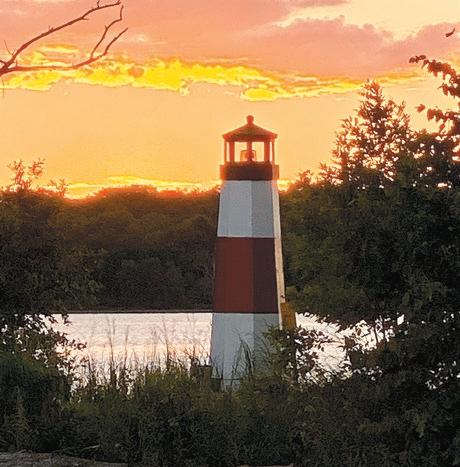
Crew Members | Page 3A
Crew Members | Page 2B
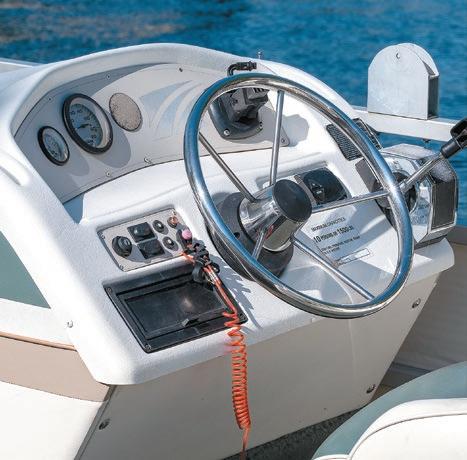
Riggings | Page 6A
Fishery | Page 10A BLUEGILLS
Galley | Page 5B
Ropes | Page 9B

Riggings | Page 2C
Shore Leave | 3C
Port of Call | Page 6C
Port of Call | Page 7C
Flotsam & Jetsam | Page 9C
Have you ever wondered what it might be like to have your own private island? One man knows all too well. Bill and Janet Jungbauer came across an opportunity they couldn’t pass up and purchased a house and island on Bone Lake. After looking at it they decided to go for it, but it was the people in the area that had them sold.
“I'm a lawyer and there was a fellow in my office whose sister-in-law worked for a realtor up in Balsam Lake. And they were the ones that were selling the island and they said, ‘You got to go up and take a look at this,’” said Jungbauer, “ So, my wife and I went up and the lady wasn't there, but there was another couple on the lake that took us out by pontoon and showed us everything and everybody was really kind to us, so we thought we'd pay, and take a chance.”
Jungbauer travels throughout the United States for his career in law. And getting the island right away was a bit tricky. In 1995, Jungbauer was determined to buy the property and had to do so while on the road. At the time, he was on his way to Alaska on a bus. Every time the bus would stop, Jungbauer would hurry himself to the payphone to make sure that the purchase was complete.
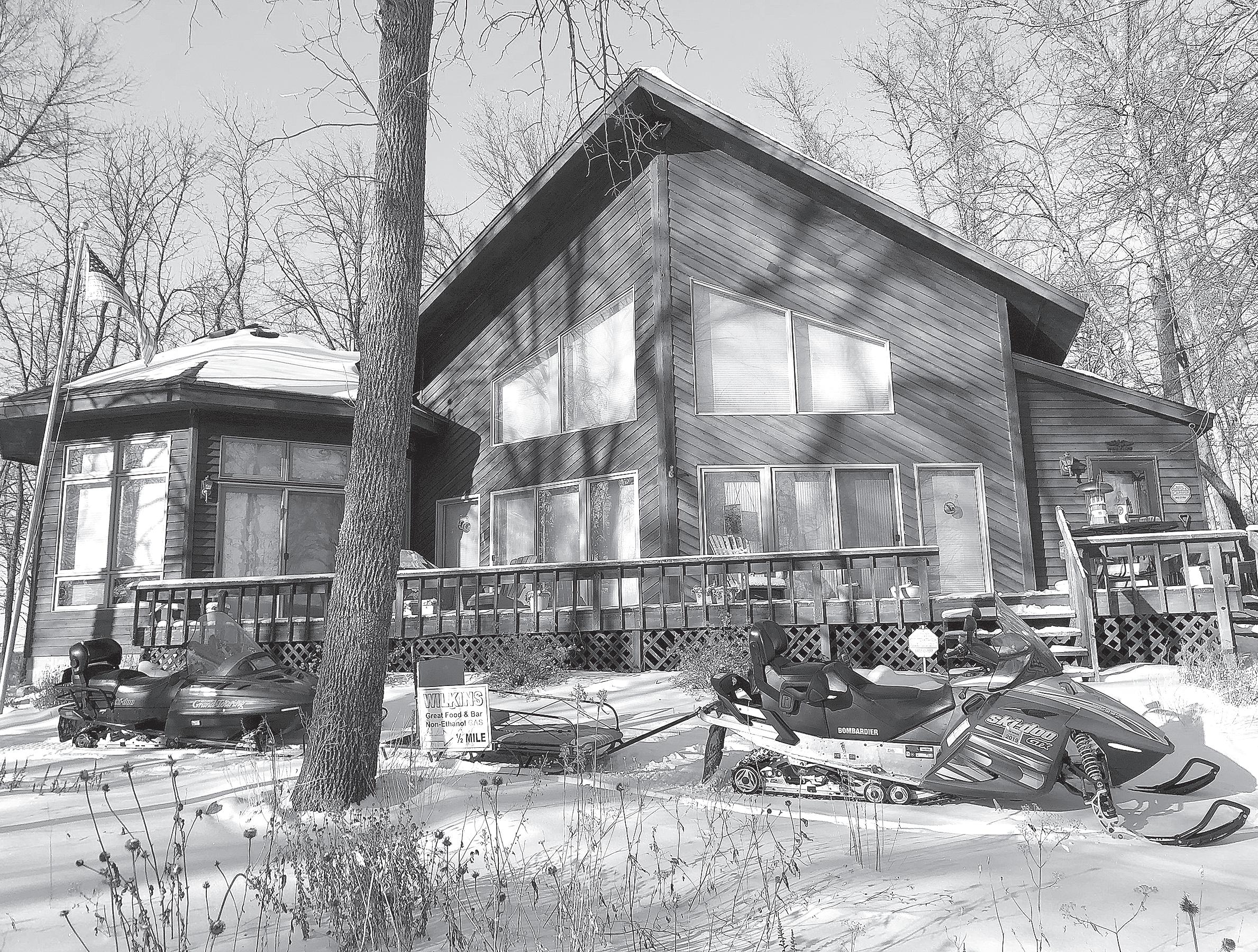
The former owner bought the property in 1985 and lived there for a decade. In the old owner’s time there, they hired a riverboat captain and barge to build the home. The island also features full electricity, fiber optic cables, and even a

geothermal heat exchange.
Getting to and from the island has been one of the more difficult parts. However, the Jungbauers have found a way to get to their paradise all seasons of the year.
“We bought a second home on the mainland where we got a dock and a pole shed and everything now. And that's how we get to and from in the summer, we go by boat. In the winter we go by snowmobile with a trailer, which is actually the easiest way because we could pull it right up to the house and then unload.,” said Jungbauer. “And then in the



other two seasons, spring and late fall we go by hovercraft.”
The island is about 15 acres long. This translates to nearly a mile of shoreline around the island to enjoy. Not only that, but they also put in a lighthouse to help boaters be careful of the rocks and the shore, especially around holiday weekends. The house is an A-frame that has three beds and two baths, enough room for the family to room together for a fun weekend.
The main draw for the Jungbauers, though, is the privacy and serenity the island offers. When one goes outside on the island, there are no other people around besides the others on the island. This also brings peace of mind because they know that they are left alone there, instead of being in the cities where they were worried about safety and other people.
The serenity comes from the natural scenes and nature surrounding the island. While on the island the couple have seen bear, deer, and even wolf prints during the winter when the ice freezes. Not only do land critters make their way to the island, but fish are also abundant near the island. The Wisconsin Department of Natural Resources set up

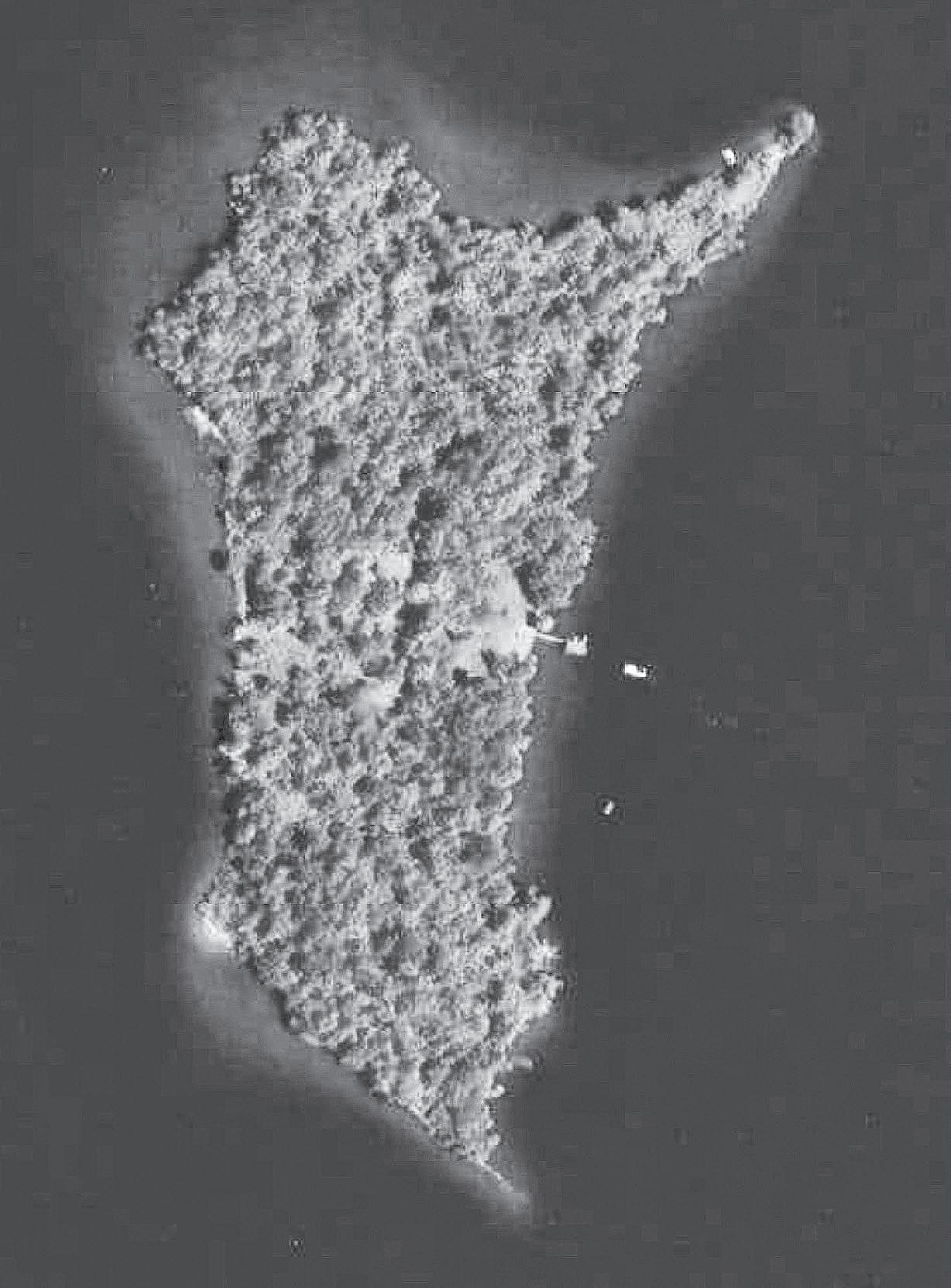

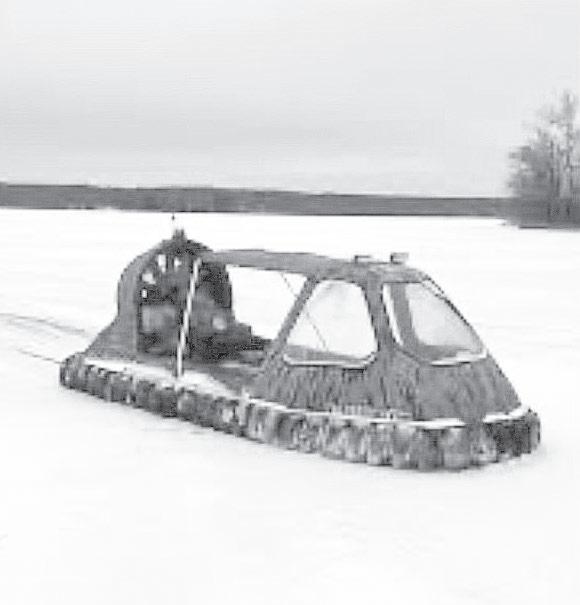

to Polk County. The only thing that beats his privacy and enjoying nature is enjoying the company in the area. In the Twin Cities area, he commented on how people view you differently in regards to status and money, something he wasn’t too keen on. In Polk County, people talk to you and treat you the way you are, based off of character and not a pocket book.
Just because Bill and Janet own the
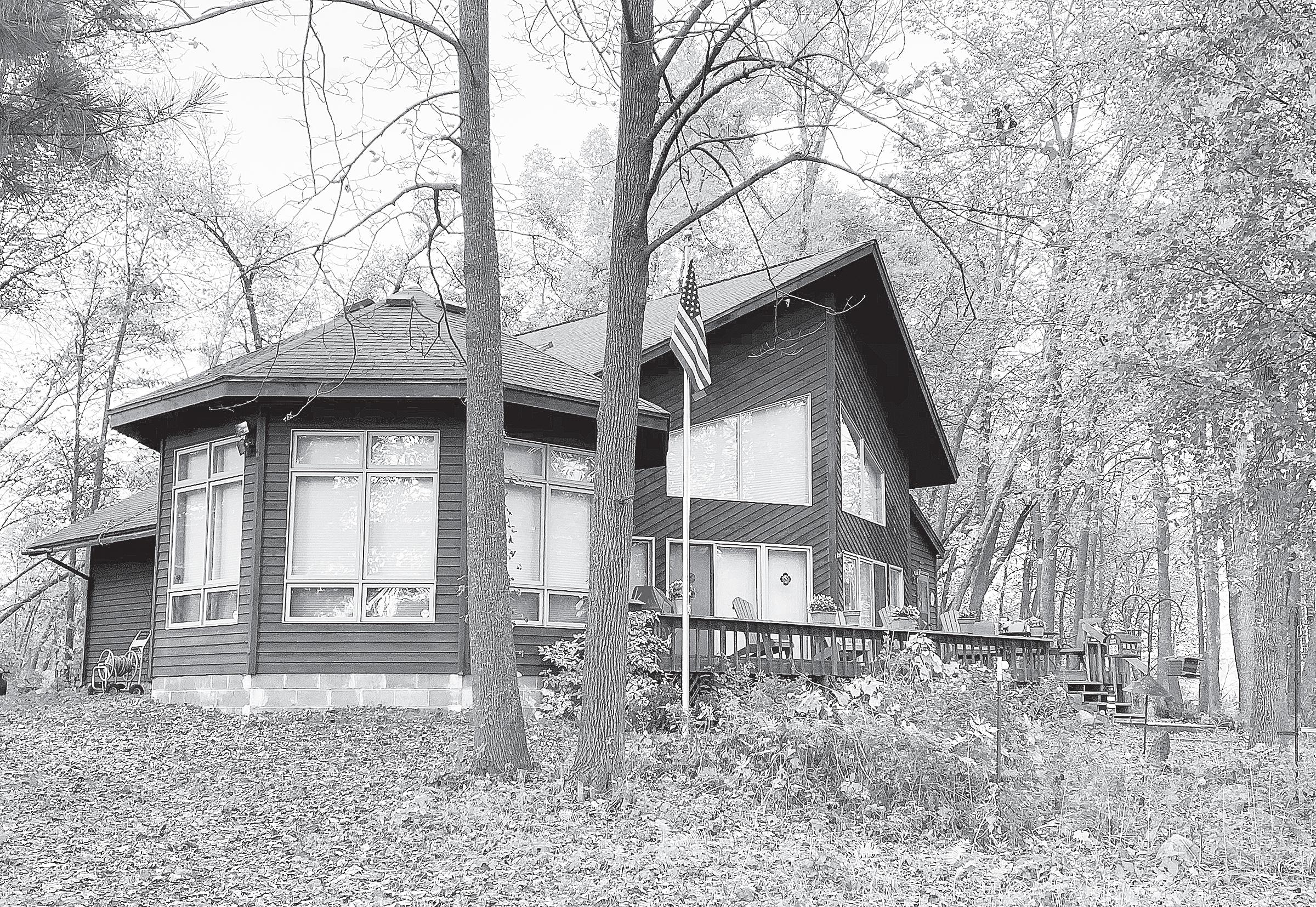
island, they still want people to be able to enjoy it. On warm summer days, families will go out and enjoy the beach on the island near the lighthouse. So long as they pick up after themselves. It is great on the Jungbauer’s side because they enjoy seeing kids happy as they spend time there. To help give back even more to the Bone Lake community, they also became coowners of Wilkins Bar. With efforts


through the restaurant, they try to put on different events to get people out and enjoy peoples’ company.
Whoever ends up owning Bald Eagle Island when the Jungbauers have moved on, they hope the new owners keep the island just as natural as it is now. But until then, they are happy to be a part of a great lake community in their own personal escape.
“I see lots of stuff in the
world, everybody watches the news and you can get tired of that stuff. And the fighting and everything that you see in court and fighting giant corporations and how they squeeze people, and everything just makes me appreciate nature. And the goodness, the good people, and the beautiful area. I mean that's just what makes it so special,” said Jungbauer. ■

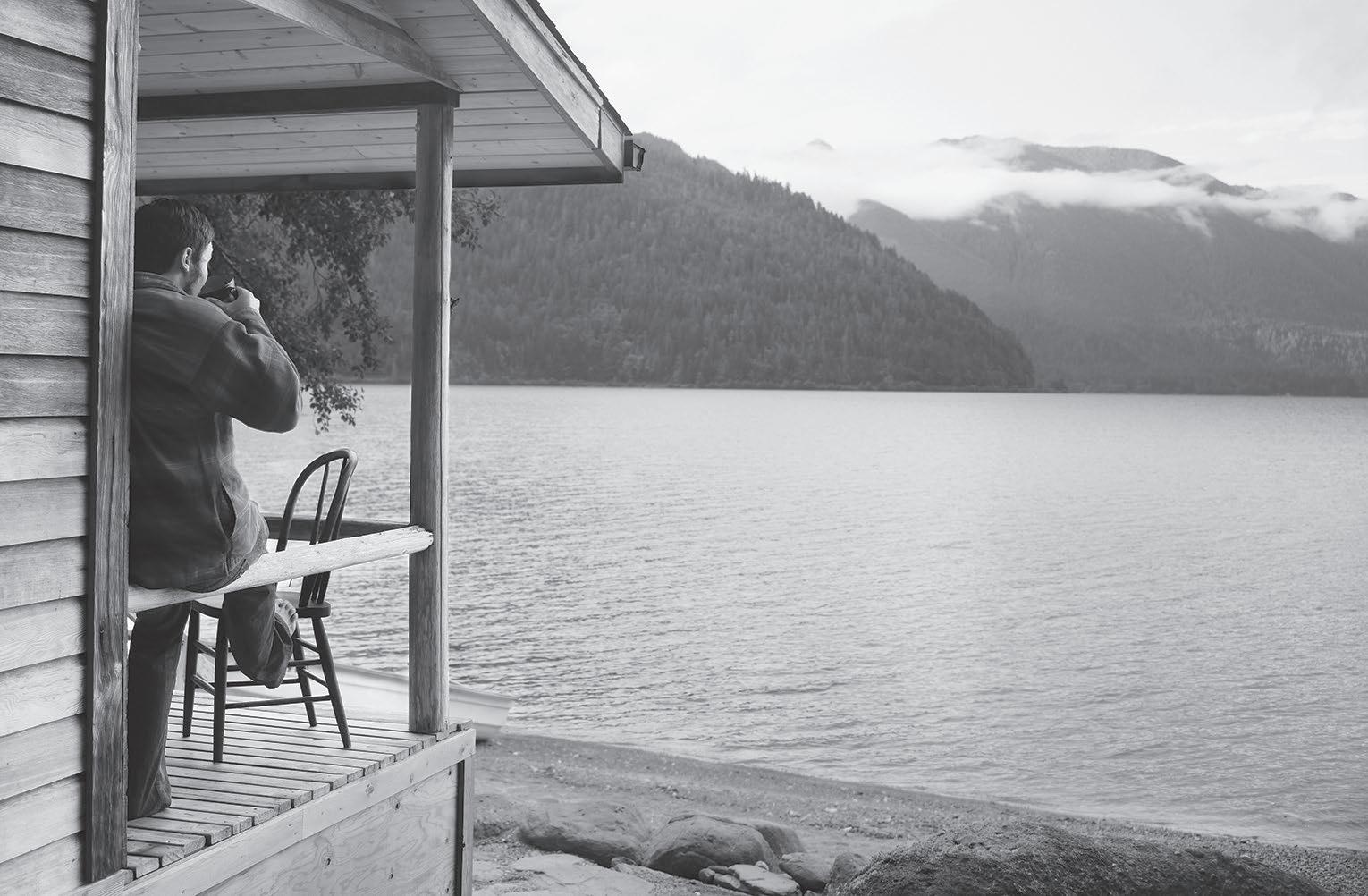






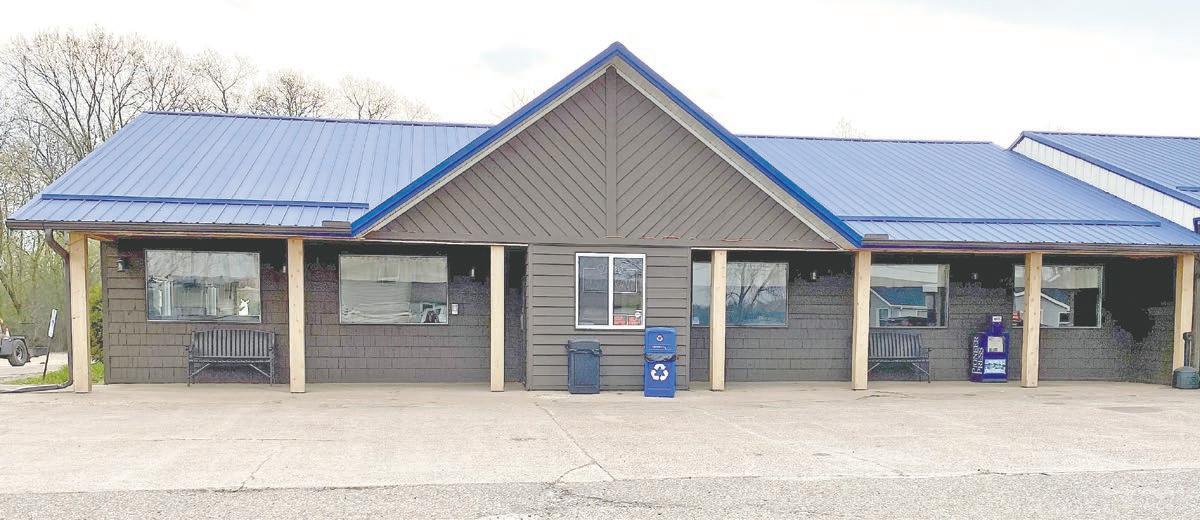
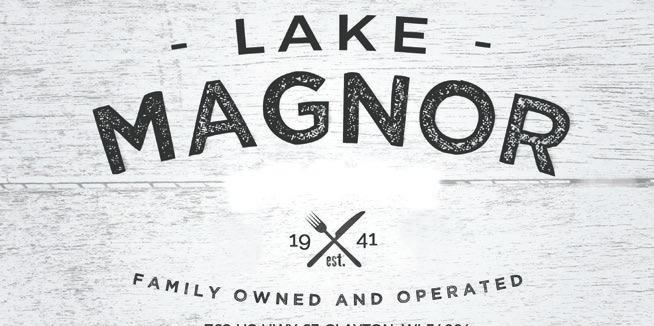


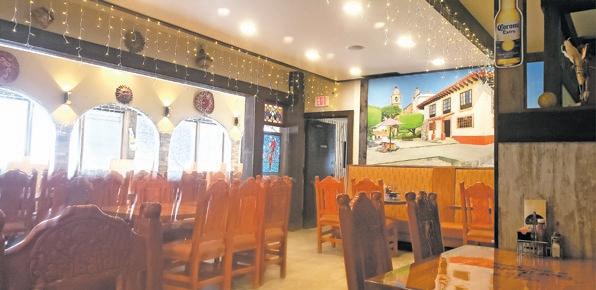










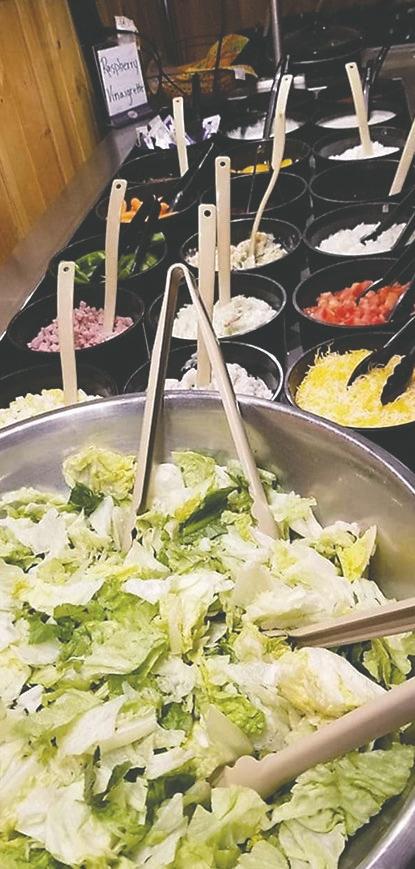







Reflect on a time you have gone fishing on the lake and the thrill when you felt that tug from the end of your line and you eagerly began to reel in what may be your catch of the summer. The fish fights and splashes against the water and when it surfaces you can immediately identify it: a sunfish. It is likely that you have caught a bluegill fish. scientifically referred to as the Lepomis macrochirus, the term “sunfish” is used to refer to over 30 different species of freshwater fish native to North America, and bluegills are the most common sunfish to be found in Wisconsin.
Most typical sunfish share identifiable features such as their round bodies, small mouths, spiny dorsal fins, and bright colored bellies. Bluegills are distinguishable by their black earflap, the dark spot at the back of their rounded dorsal fin, and blue hued faces. On average, bluegills weigh about one pound and can be anywhere from six to nine inches long.
As bluegills are primarily freshwater fish, you can find them in many ponds and lakes, preferring water that is between 60 and 80 degrees Fahrenheit. They can

be found near weed beds, logs, and other places with aquatic vegetation. Bluegills often gather in schools and are territorial, rarely leaving a chosen area, especially during spawning season.
The spawning process
starts in the spring and carries on throughout the summer when the water reaches about 64 degrees. Bluegill males begin their spawning season sweeping their tales across the dirt beds of lakes or streams to create a 6-12 inch diameter
nest for the female to lay her eggs. A single female can lay up to 60,000 eggs which the male is then left in charge of guarding for two to five days and then another five to ten days until the hatched fry are able to swim away on their
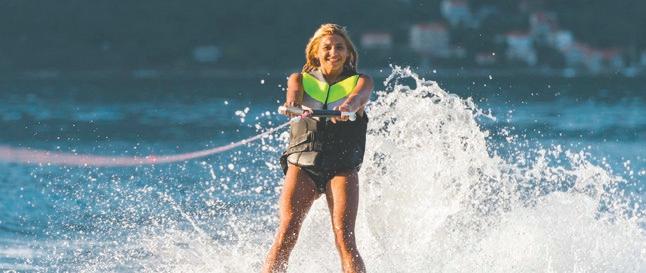


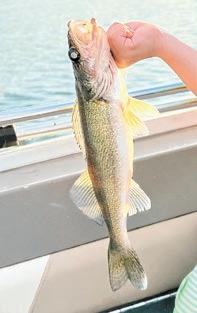
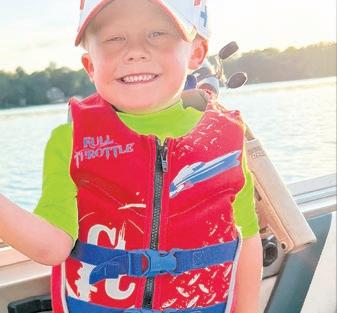



own. During this time the male bluegills will become very aggressive, chasing other fish and predators. Dorsal fins are spiny to deflect predators such as larger fish, snakes, turtles,
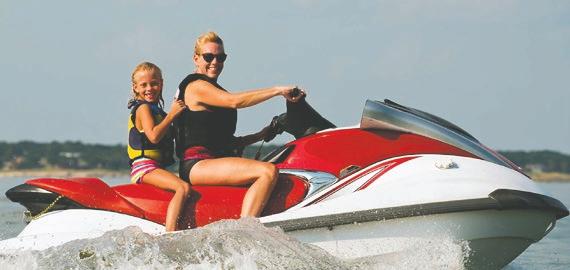


and waterbirds as the needle sharp fins make them hard to swallow.Bluegills are considered colony spawners meaning that over 50 nests could be made in a single area.
When not in the spawning season bluegills can be found in deep waters, which is a great place to begin if you wish to catch them. If you are hoping to catch the fish in shallow waters, the best time of day for this is in the mornings and evenings as that is
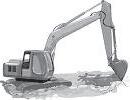
when they tend to move towards the surface to eat bugs. Their diet consists of zooplankton, small crustaceans, fish, and insects making live bugs such as worms or grasshoppers good bait. Bluegills may also be caught on a number of different lures including poppers.
Because they are plentiful and easy to catch with a number of lures, many ponds and lakes around the state are stocked with the fish for the purpose
of sport fishing. Bluegills were first officially named in 1819 and reported to be from the Ohio River, however their native range is believed to stretch from Southern Canada to Northernmost Mexico and include most of the eastern United States from the Great Lakes and Mississippi. Today, the fish can be found in most of the U.S. including Hawaii due to stocking programs.
Bluegill fishing is fun and leisurely, and does not require much knowledge
or special equipment in order to catch, making it a perfect type of fishing for beginners and children. The fish is a popular type of panfish that makes for good eating, so regardless of if the bluegill sunfish was your catch of the summer, it can be very rewarding and is a great way to make memories this summer. ■













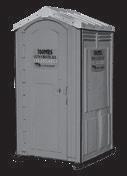








All Are Welcome to Worship with Us!
Sundays: Worship 10:15 a.m. • Coffee Fellowship 9:30 a.m. Pastor Laurie Kenyon Woods

1115 Mains Crossing Ave. • Amery, WI 715-268-9291 • www.balsamlutheranchurch.org
Georgetown Lutheran Church

715-857-5580
887 190th Ave., Co. Rd. G Balsam Lake, WI 54810
East of Milltown & Balsam Lake
Pastor Diane Norstad • Fully Accessible
Sunday Worship 9:00 A.M.
Join us in person or online at www.eastbalsam.org
715-857-5411 contact@eastbalsam.org Fully Accessible

1816 - 108th St./Co. Rd. I Balsam Lake, WI Come & Worship With Us

240 W. Elm St. • Amery
Tim Bjorge, Pastor Sundays: 9:00 am Worship
Weekly Live Stream on Facebook: FirstLutheranChurchofAmeryWI 715-268-7135 • www.flcamery.org

uploaded to YouTube or Facebook page: www.Facebook.com/ Georgetown.Church
Communion Every Sunday Sunday Worship 10:45 am www.georgetownlutheran.net

113 W Main | P.O. Box 195 Milltown, WI 54858 715-768-3444
Sunday Service 10 am
Pastor Chuck Bailey milltownhof@gmail.com

Sunday Worship 9:30 a.m. 715-472-2605
510 E. Foster Ave., Luck secretarypaula@lakeland.ws www.lucklutheran.org
WORSHIP IN THE PARK in the park across from church July 21, 2024 • 9:30 a.m. “Breaking Chains” Praise Band Bring a chair. If rain, at church Everyone Welcome!
“Opening Doors of Faith For All People”
REDEEMER LUTHERAN - LCMS 600 Keller Ave. S., Amery 715-268-7283 redeemerlutheranchurch-amery.com
EDWARD CLEMENS, PASTOR
Join us for weekly online or in person worship on Sundays at 9:30 a.m.
See our Facebook Page

447 180th St • Osceola, WI 54020 • 715-294-2936 westimmanueloffice@gmail.com
Pastor Lori Peper
• Worship each Sunday at 9:30 a.m.
• Summer Worship outdoors 2nd and 4th Sundays
• Coffee and goodies after church
• Bible Study on Tuesdays at 10 a.m.
• Children’s Church Sundays a 10 a.m. ELCA All are Welcome




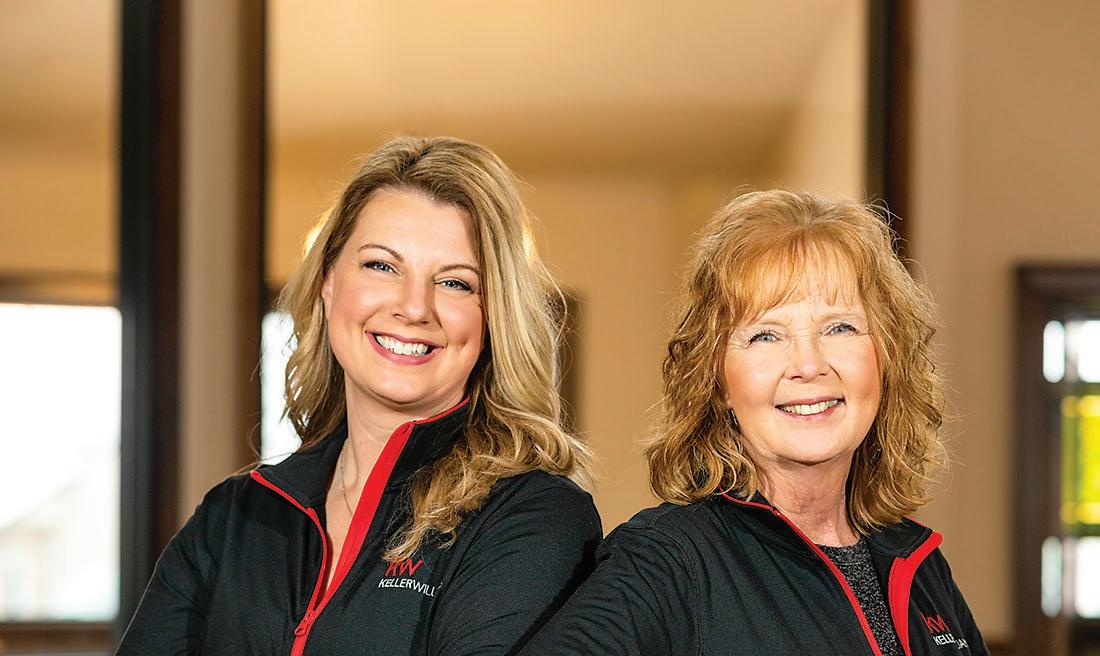






Acres 2,054
Total shoreline 22.7 miles
Maximum depth 37 feet
Milltown, Georgetown, Balsam Lake, Apple River, Polk County, WI
Map art: © Karen Engelbretson 2022
Area 2,054 total
Max Depth 37 feet
Boat Landings 6
Fish
Panfish, Largemouth Bass, Northern Pike and Walleye
Chinese Mystery Snail, Curly-Leaf Pondweed, Japanese knotweed (Fallopia japonica), Purple Loosestrife, Yellow Iris, Zebra Mussel
People heading out to Balsam Lake every year may have noticed water skiers doing some unique acts out on the water.
In tandem, the skiers are pulled behind a boat doing acrobatics, pyramids, and even jumps on the water. The Balsam Lake Water Ski Show Team is made up of people with a love for the sport.
Starting back in 1960, the team has grown to perform at Balsam Lake as well as different events held on other lakes in the state. Their team members are taught everything from skiing to boat driving and even help with what happens behind the scenes. They are dedicated to providing a great experience and instruction of how one can water ski. The only thing they ask is that anyone who wants to join be comfortable in the water and have a strong desire to learn.
Over the course of several decades the ski team has inspired many young people to practice and eventually lead them down a road to join later in life. One family who moved to the area was able to watch one of these ski shows and were in awe of the different types of moves and acrobatics taking place on the water. Little did they know that the experience would lead them down a road of falling in love with the sport and shared family fun.
“About five years ago we attended a ski show on Balsam Lake and we just enjoyed it as audience members and

were so impressed with the talent of the ski club. And we reached out just to see what it took for the girls to join the club,” said Lisa Jagielo, Balsam Lake resident, “And we learned that as long as they liked to be in the water and knew how to swim and enjoyed learning new things, they could join the Balsam Lake's show ski team and they would teach them everything they need to know from there. And that's exactly what we did.”
The experience would be something new and very much different than what the family was used to. Lisa and her husband, Dean, both grew up on dairy farms with no lakes in sight. However, after seeing their girls faces light up at the skiers, they knew they would need to get their girls into the club.
Addison and Brooklyn took well to learning and getting used to using their skis. When they both first joined they had no idea what they were doing on the water. But, they would soon learn. During their first practice after signing up, they began by getting into skis. Incrementally, they would build up to being able to ski on the water. Once they were able to stay up, they were hooked on the excitement of being on the water.
When the family first started, they had a pontoon that they would pull the girls behind to help them practice and get better. After a few years though, they needed something a bit better than the pontoon and would eventually upgrade to a better boat, able to pull the girls




more effectively.
Not only is it important to learn the skills but safety on the water is top of mind as well. When they first started they were also given special life jackets to wear, in case they fell while on the water. The special life jackets that are given are smaller and not as bulky as other life jackets. This is to help them maneuver better while on the skis and water.
When ready to go on the water, a fun way to show off their skills and hard work is through what they call “conventional” skiing.
“So, someone skiing it normally and they have someone on their shoulders and while their arms are out skiing, you hook your feet underneath their like arms and then you lay back and you go back up and do that a few


times. And then you get on like one of their shoulders and point your foot out and cross the other across their body and then do show hands,” said Addison.
When the two girls started, Addison was in second grade and Brooklyn was in kindergarten. When they were introduced to the water sport, they both had different thoughts about skiing. Addison thought it was pretty scary and definitely something new to experience. When she would go to school and explain what she was doing, a lot of other classmates asked her all sorts of questions and even came out to see her perform. Since then, she has even gotten a friend or two to join the team.
Brooklyn’s experience was a little different than her sister.
“When I first started the ski team, I was in kindergarten and I hated it. It was cold, it was 9:00 a.m. I was like, ‘I don't really want to be doing this’. I want to be resting on my Saturday. But now I absolutely love it. It's so fun and you get to learn new skills and it's just really nice,” said Brooklyn.
Now that summer has arrived, the family spends a lot of their time out on the water and has evolved into a family activity they all can enjoy. With the girls being so involved on the show team, they need a little extra practice to hone their skills. Now, Lisa, Dean, Addison, and Brooklyn spend upwards of 20 hours a week on the lake. Lisa admits she is the permanent boat driver and that



her husband is very involved in the water sports and loves skiing with his daughters.
Not only did they find enjoyment out of it for their immediate family, they decided to spread the love. Now, the girls are helping to teach their cousins how to water ski and are getting the rest of the family interested in trying something new.
The Balsam Lake Water Ski Show Team takes members of all ages. At this point there are about 25 or so kids that are participating in water skiing. The team generally takes off from the 46 Store boat landing and begin their practices. Shows happen just off the shore from Sunny Side Marina and they put on about three a summer. Two being at Balsam Lake and one on Lake Wapogasset.
Now going into their fifth year of water skiing, the family couldn’t be happier in
the choice they made those short five years ago. From seeing the people perform to now seeing their two daughters on the water, doing the same thing, has been one of the family’s favorite parts of the experience. After investing in a boat, they all now have something to bond and have fun with, even without the skis.
“Ever since purchasing that boat, we've been able to do all sorts of water sports, whether it's skiing, wakeboarding, surfing, or just good oldfashioned tubing, which I'm not sure you'd consider tubing a sport. But it's fun to just share that with family and friends too and watch all sorts of ages try to build those skills and the confidence and I don't think I ever thought they'd learn so fast. That's the part that amazes me the most is how fast the younger ones pick up on it,” said Lisa. ■
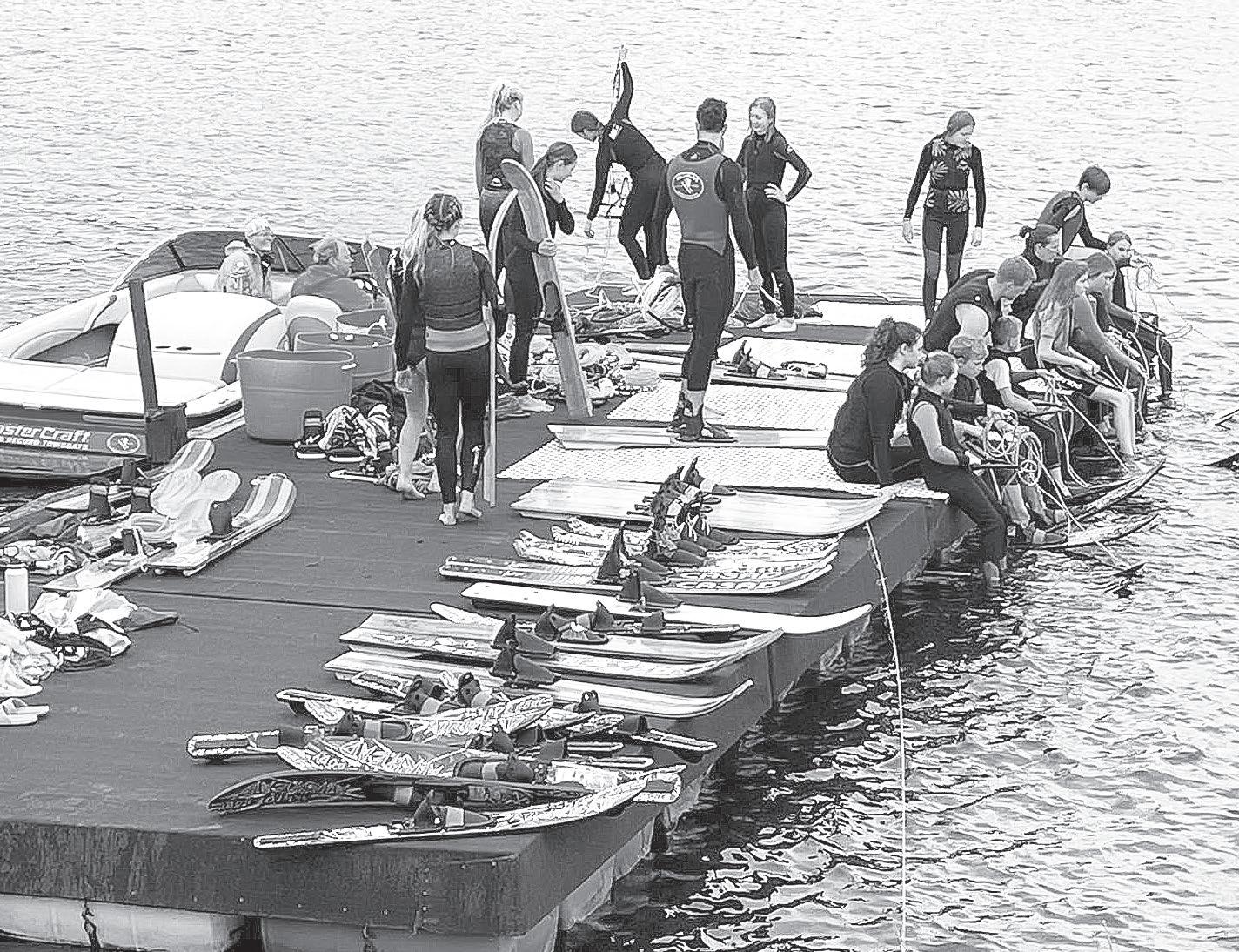
Contributed


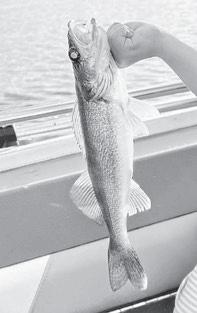




Ingredients
• 1 lb. uncooked farfalle pasta
• 1 (8-oz.) jar sundried tomatoes in oil, undrained
• 2 oz. Parmesan cheese, grated (about ½ cup)
• 1/3 cup pine nuts
• 1 tsp. red wine vinegar
• 1/2 tsp. kosher salt
• 1/2 tsp. crushed red pepper
• 1/3 cup olive oil
• 1 cup loosely packed fresh basil leaves (about ¾ oz.)
• 1/2 cup coarsely chopped fresh flat-leaf parsley
• 1/2 cup crumbled feta cheese (from 1 [4-oz.] container)
• 1/4 cup coarsely chopped fresh dill
Directions
1. Prepare pasta according to package directions. Drain pasta, and return to pot.
2. While pasta cooks, place sun-dried tomatoes (with jarred oil), Parmesan, pine nuts, vinegar, salt, and crushed red pepper in a food processor. Pulse until mixture forms a paste, about 5 pulses. With processor running, pour in olive oil through food chute until combined (pesto will be thick, but mixture should still spin inside processor). If mixture is too thick, add water as needed, 1 tablespoon at a time, until desired consistency.
3. Add pesto to drained pasta in pot; stir to combine. Add basil, parsley, feta, and dill; gently fold into pasta. Serve warm or at room temperature.

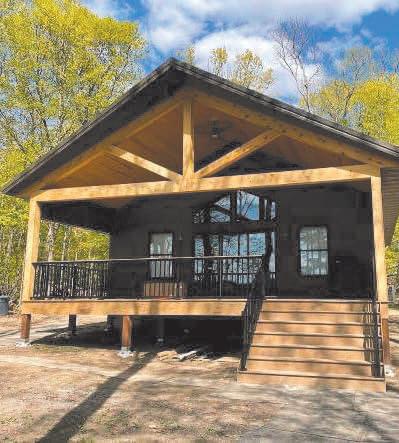


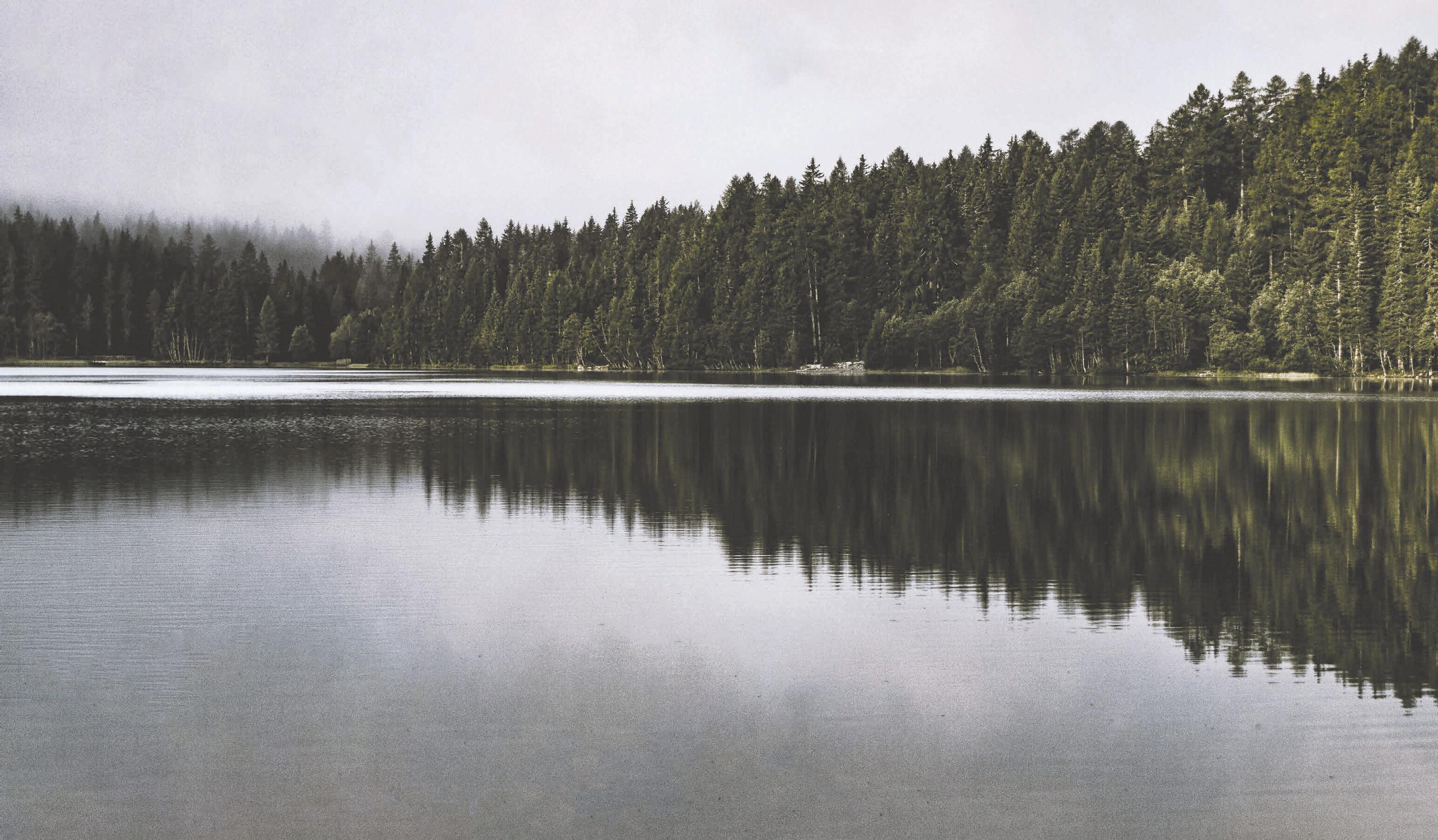







• 2 Tbsp. unsalted butter
• 1 medium-size yellow onion, chopped (2 cups)
• 3 (5-oz.) pkg. fresh spinach, coarsely chopped (14 cups)
• 2 (12-oz.) jars marinated quartered artichoke hearts, drained and coarsely chopped (3 cups)
1 (8-oz.) pkg. cream cheese, softened
• 1 (6-oz.) pkg. finely shredded Parmesan cheese
• 1 cup mayonnaise
• 2 tsp. grated lemon zest plus 3 Tbsp. fresh juice (from 2 lemons)
• 1-2 Tbsp. hot sauce (such as Tabasco), to taste
• 2 (8-oz.) blocks Monterey Jack cheese, shredded (about 4 cups)
• Crackers, pita chips, or crudités, for serving

Directions
1. Preheat oven to 375°F. Melt butter in a 12-inch cast-iron skillet over
medium. Add onion; cook, stirring often, until onion softens and begins to turn light
golden brown, about 10 minutes. Add spinach in 2 batches, stirring until spinach is wilted before
adding next batch; cook over medium, stirring often, until liquid evaporates, 4 to 6 minutes. Remove from heat.
2. Stir marinated artichokes, cream cheese, Parmesan, mayonnaise, lemon zest and juice, hot sauce, and 3 1/2 cups of the Monterey Jack cheese into the spinach mixture in the skillet until well combined. Spread in an even layer, and sprinkle with remaining 1/2 cup Monterey Jack.
3. Bake in preheated oven until cheese on top is lightly golden brown, about 25 minutes. Let stand 5 minutes. Serve hot with crackers, pita chips, or crudités.


Ingredients
• 12 hard-boiled eggs, peeled and finely grated
• 1/2 cup mayonnaise
• 1 tsp. yellow mustard
• 1 Tbsp. finely chopped dill pickle
• 1 tsp. kosher salt
• 1 tsp. fresh cracked pepper
• 10 slices white bread, crusts removed
Directions
1. Gather your ingredients.
2. Prepare egg salad: Combine all ingredients except bread into a large mixing bowl.
3. Use the back of a fork to mash ingredients together until evenly combined and smooth.
4. Generously spread a layer of the egg mixture on top of 5 of the bread slices.
5. Top each with a remaining slice of bread.
6. Cut sandwiches into fourths, and serve.



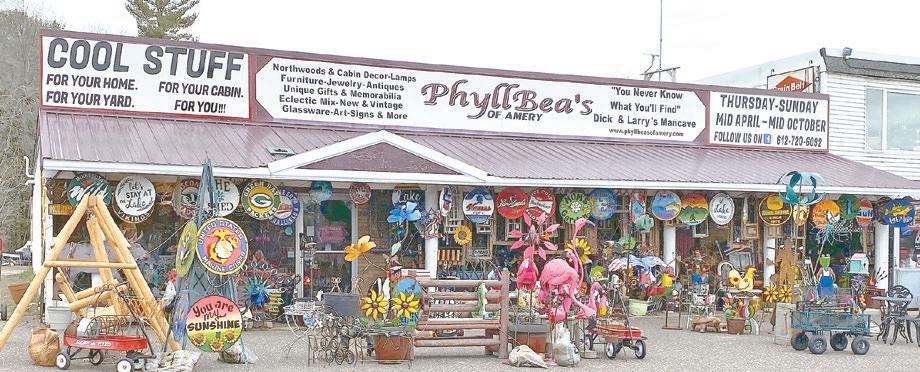
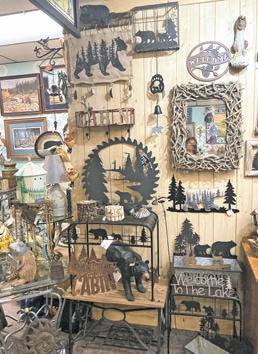
CUSTOM MAPS of Lakes & Rivers Clocks • Lazy Susans Cribbage Boards & Framed
4th of July Hours

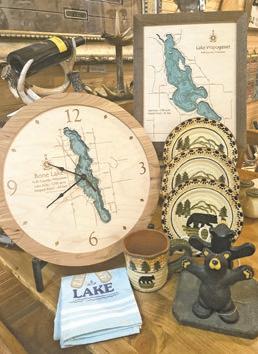
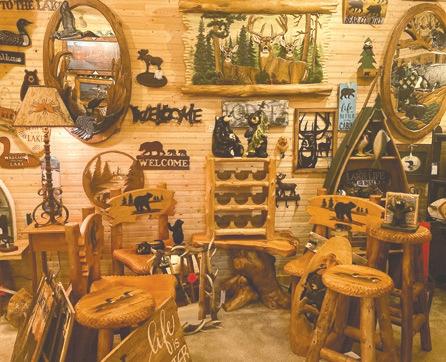
Certain types of crayfish are native to the lakes in the area, except for one species. The rusty crayfish is an invasive species that is found in both Balsam and Bone lakes. The small creature is very detrimental to the habitats they live in in regards to plant and fish life.
“It can affect water habitats kind of a couple different ways in it that it damages the underwater habitats and cover. It's a lot more aggressive than our native crayfish. So, I think some species of fish that tend to prey on crayfish, might not necessarily eat the rusty. So that's could be part of why they are expanding,” said Colton Sorensen, Water Resources Specialist at Polk County Land and Water Resource Department.
The rusty crayfish is native to Ohio in the Ohio river basin where it lives and thrives to this day. It isn’t found in too many lakes or streams in the area. Out of the over 400 water bodies in the county, only six lakes so far have spotted the crayfish, making it not as common as other invasive species. The crayfish is also in about a dozen streams or so, similar to its habitat in Ohio.
The creatures are also

difficult to catch and to spot.
Crayfish in general are tricky and quick when they do not want to be caught. Swimming backwards by the tail, crayfish dart to hide under rocks and in underwater vegetation. To spot a rusty crayfish, someone
would need to first catch one. Because of the other species of crayfish in the area, it would make determining if it was a rusty incredibly difficult without proper training and knowing where to look for identification.
The rusty crayfish has two


characteristics that help set it apart from the other species in the lake. The first being its size. Compared to other crayfish in the area, the rusty is much larger than its distant cousins. Growing upwards of two and a half inches long,
without its claws, it makes it quite a bit larger than native species. When you add in the claws as well, they grow larger than their counterparts as well. The biggest characteristic that






will be able to help determine if it is a rusty crayfish is a rust colored spot on either side of its main torso. When they are out of water, the spots are easily identifiable.
“I've never really seen them where they're really faded or anything. And if you see a crayfish with those rust-colored spots, it is indeed the rusty crayfish. No other species has those rust colored spots. The actual appearance of the entire crayfish colorings can change to resemble more of what the native species look like or the native’s colors can change to look more like a rusty, but the main thing you're looking for is that rust colored patch that has it, and if it does, it is a rusty crayfish,” said Sorenson. What really sets the species apart from native crayfish though, is its aggressive behavior. Compared to the other species, this type of crayfish goes above how the natives species act in the area. Because of this, they are detrimental to fish eggs making it to adulthood, and pushing out native crayfish from their habitats. For the area, there are about six native crayfish

in the lakes of the county.
There is one species of crayfish that comes to everyone’s minds when they think of them, and those are the red swamp crayfish. These species can be mostly found south and are what the southerners use in their crayfish boils. However, it is illegal to transport any live species of crayfish to another state.
There are rules to harvesting native crayfish and have bag limits on how much you are able to take out of the body of water. If interested, check out the Wisconsin Department of Natural resources, www.WIDNR.com.
Now that the rusty crayfish is in two of the largest lakes in the county, managing or eradicating them is next to
impossible, without hand catching them yourself. Chemical treatment would be out of the realm of possibility because of how much it would affect the other organisms in the same habitat. People have used mechanical harvesters too, to help cut down on the population. However, with the size of the lakes, and the many spots for the species to hide, they are here to stay. The one thing people can do to help slow the spread, is to double check boats before leaving, and not transport live crayfish to other lakes.
“Make sure you’re not using them as bait. And it's actually against the law in Wisconsin to use these as bait. So, make sure you're not doing that. Make sure you're not transporting them, bringing them to different places, bringing them home, putting them in your aquarium and then dumping it in your yard. Then they walk to somewhere else. So, prevention is extremely important. But as far as any type of control, just manually managing them is probably going to be your best and only bet really,” said Sorenson. ■
















Banded Mystery Snail, Chinese Mystery Snail, Curly-Leaf Pondweed, Purple Loosestrife, Rusty Crayfish
Boats come in all shapes and sizes but the best one is generally large, square, and on a barge. Pontoons are staples on most lakes that you go to and offer a variety of ways to enjoy one’s time on the water. But sometimes by happenstance, people stumble upon an opportunity that feeds their love of being on the water.
“We went to a boat show on a Sunday afternoon because there was nothing else to do. Just to walk around and check out different boats, “said Bobbi Wolz, local pontoon owner. “And we walked and walked and looked and looked and it was the very last boat in the corner. And we went to it and we all went ‘Oh my God, we need to have this boat’. And we literally were talking about it and I'm like, I can't even believe that we're having this conversation because it was supposed to be just something to waste the day away.
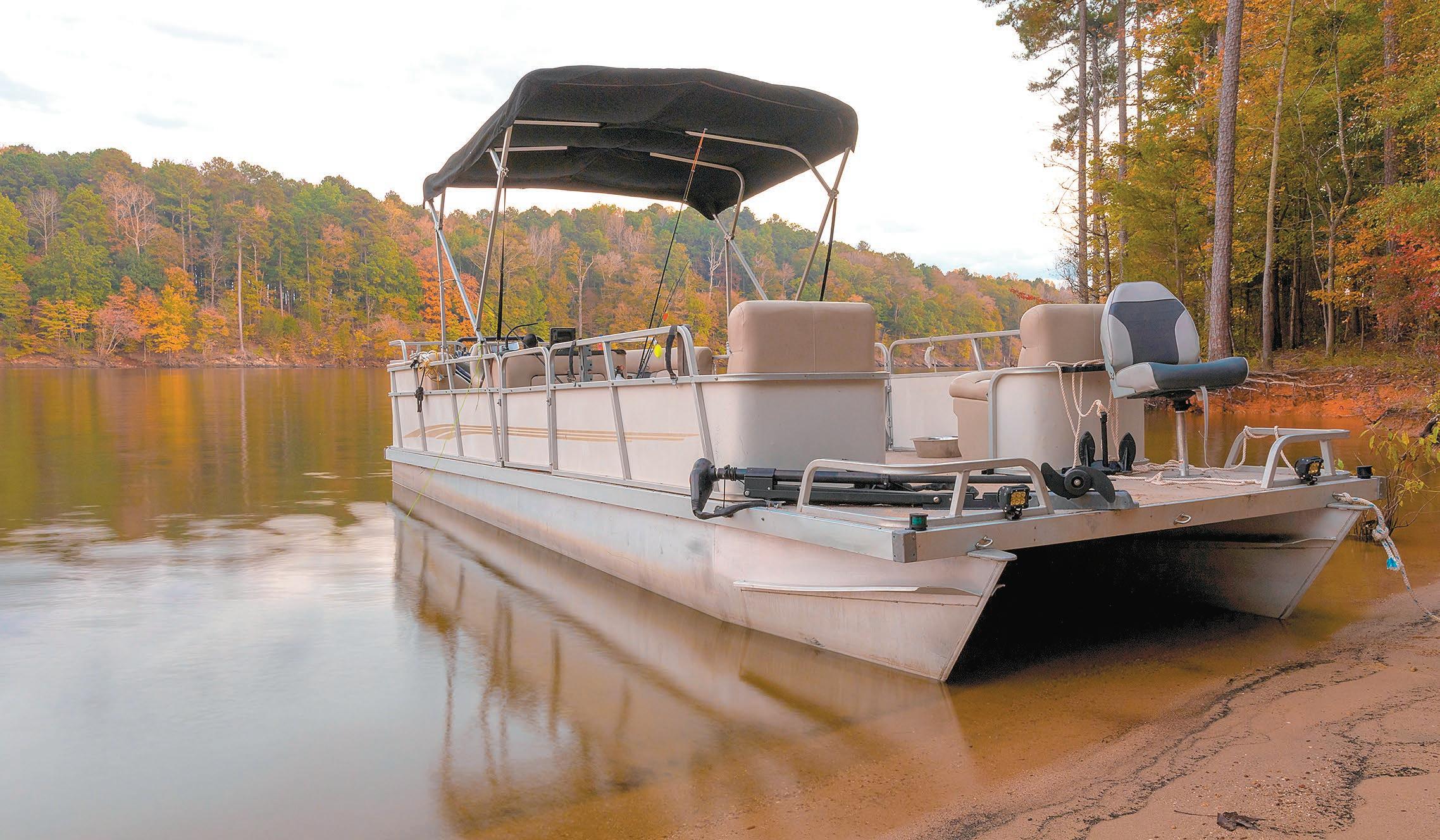



Clear Lake puts on a town party annually called Heritage Days. This year the event will run from Thursday June 27 through Sunday June 30. The town’s celebration has been going strong for about 75 years and has evolved over the course of time. Starting as a small get together, to now hosting numerous different activities.
“It was the Farmer's Cooperative Creamery that had a thing in the park where they would give out ice cream and stuff like that for all the people in Clear Lake, and then it kind of evolved from just being sort of an ice cream day,” said Wendy Schoggins, President of the Clear Lake Civic and Commerce. “John Campion, who was one of the founders of the Clear Lake Museum, he was very into our heritage and artifacts and things like that from local stuff. So, he kind of brought in the heritage days part of this to just sort of celebrate how we started out as a lumber town all that back in the 1800s.”
From there, Schoggins’ father would end up playing during Heritage Days and was a part of a group that would be the first to bring music to the event. So, they brought a hay wagon down and played to a crowd who had their first “street dance.” After, they would also

put on a small doll buggy parade for the kids in the area. After these first few events happened, Heritage Days grew from there to what we people in the community know today.
This year is looking to be a fun time with a full line up of different events happening in town for both kids and adults. Last year, the town was able to get well known country artist Chris
Welcome to beautiful Balsam Lake, a village living in natural harmony. Established in 1905 the Village of Balsam Lake rests on the southwest shore of Balsam Lake in one of the most prime tourist locations of northwest Wisconsin. Whether you are looking to relax or take part in a wide variety of activities, both on and off shore, the Village of Balsam Lake is the place for you! The Village is nestled on the largest lake in the area, (2,054 acres), which is teeming with fish to satisfy the most avid of anglers. The unique shoreline stretches 65 miles and the lake is dotted with picturesque islands and bays. Fine Dining and casual eateries abound and over 50 businesses provide a vast array of services.
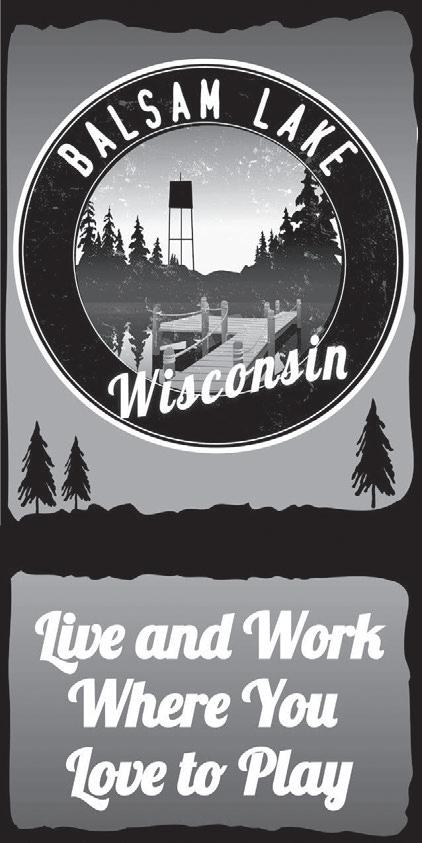
Kroeze and will be changing it up this year. Instead of a mainliner with a well-known artist, the town will feature a bunch of smaller artists and bands performing. They will also feature a stand-up comedian to hand out laughs through the night.
Friday June 28, will be primarily for kids and families. There will be two different opportunities for young ones
to be interact with some animals. Both a reptile show and a petting zoo will be set up to enjoy throughout the day. There will also be face painting and a saw dust pile to jump into to find prizes. Parents will also have the chance this year to have a little fun of their own. There will also be a saw dust pile for the adults featuring drink tickets and prizes for the older generations. The adults will also have the chance to flex their vocal abilities with adult karaoke as well.
Although there will be many things going on through the four days the main draw is being able to spend time with family and friends throughout Clear Lake.
“My Bible camp inevitably would land whenever Clear Lake Days was. And I voluntarily skipped it because my dad's band played all through from the late sixties when I wasn't even here yet, all through to the nineties. And it was just literally a time that we were all there together. It was just so cool. And I think that really resonates with people and Clear Lake to this day. It's such a family event, but there's really something for everyone,” said Schoggins.
Next year’s celebrations will be a special one for Clear Lake as they come upon their 150 year anniversary, and will be even bigger yet. ■



And pretty soon the guy is up there wheeling and dealing with us.” Wolz began her pontoon adventures 16 years ago and hasn’t looked back since, becoming an avid boater over the years. Since a young age, Wolz had always gravitated toward the water. It felt as though it was her happy place, a location to escape the busyness of life. She is not an angler, she doesn’t tube or ski. However, Wolz and her husband, Scott, enjoy being able to lay out on the boat, take in the sun, and slowly make their way around the lake looking at the lake homes. But fate had a cruel plan for the dream pontoon.
In 2019 bad storms ripped through the area on July 19. After a storm tore through the east Balsam Lake area it left many lake homes in disarray. Lifts were tipped over. Docks lost and in pieces. And Wolz’s pontoon flipped over. The couple would go out and find a new pontoon shortly after for the Labor Day weekend. Although it wasn’t as good as the first one, they saved money thanks to COVID, and were able to create more memories with family and friends.

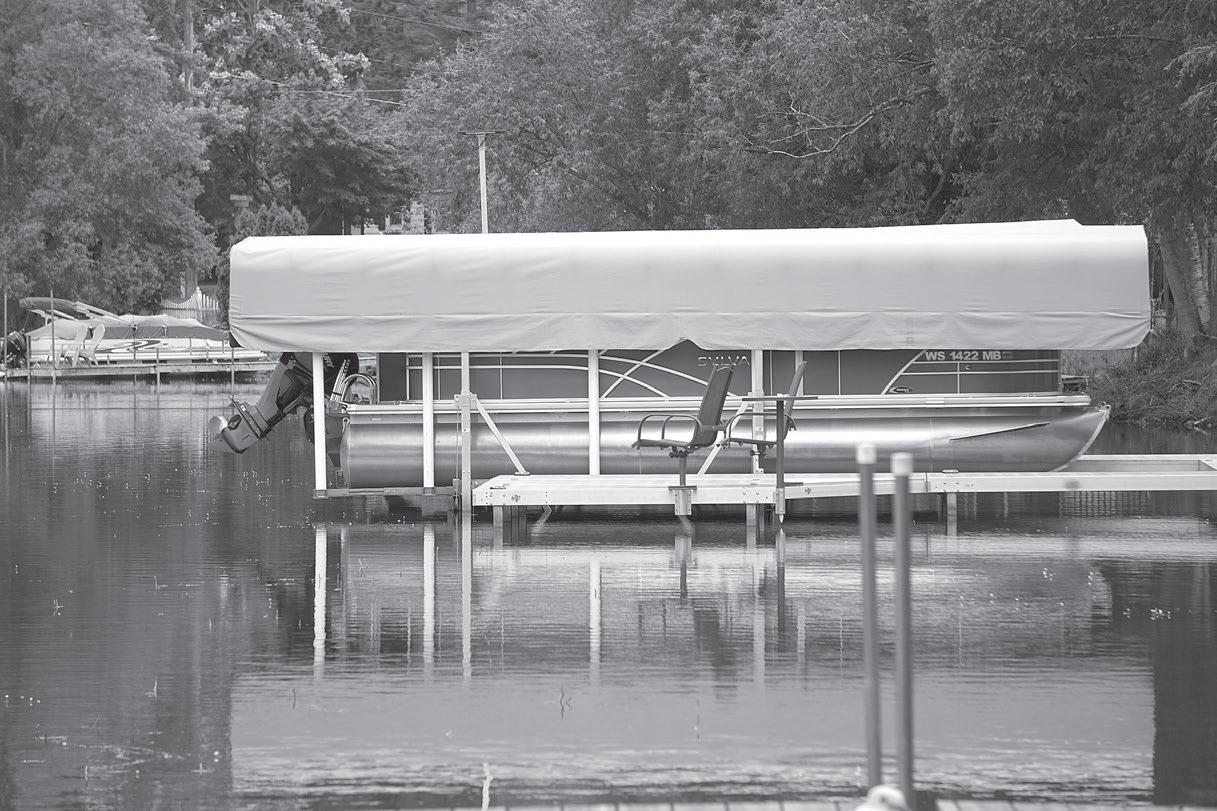
There are two things that stuck out to Wolz when reminiscing about her time on the pontoon. The first is her first ride out on the water, spending time with a young family of four enjoying their time. One of her sons even got to drive a boat for the first time. The next thing that stuck out was being able to see

her mom, Patty, on the craft, enjoying seeing her grand kids and family.
“Probably every year we try to go out for my mom's birthday and we do a big cookout on the boat and everybody's floating and she just watches everybody. She stays on board but you can just see that she's just so happy to
be on the water,” said Wolz.
Although it’s all fun and games on the water there are a few challenging aspects to master the pontoon. Docking is and has been, one of the more difficult parts of owning the pontoon. When docking, you must slow the boat down and line it up with the dock so it doesn’t hit the dock hard, and still have enough room to tie it off. It is especially difficult on windy days.
Having to hook up a trailer and back it into the water takes more time and effort than having a boat lift on the water, something Wolz has invested in. With the lift, they are able to get to the open water in a fraction of the time.
Right now, the couple is landlocked. But not for long. For some time Wolz and her husband having been keeping an eye for land or cabin on a lake nearby. The two have been boating mostly on Balsam Lake throughout their time with the pontoon but are looking for something a little more quiet and less busy. Their sights are set a little more north near family and will be



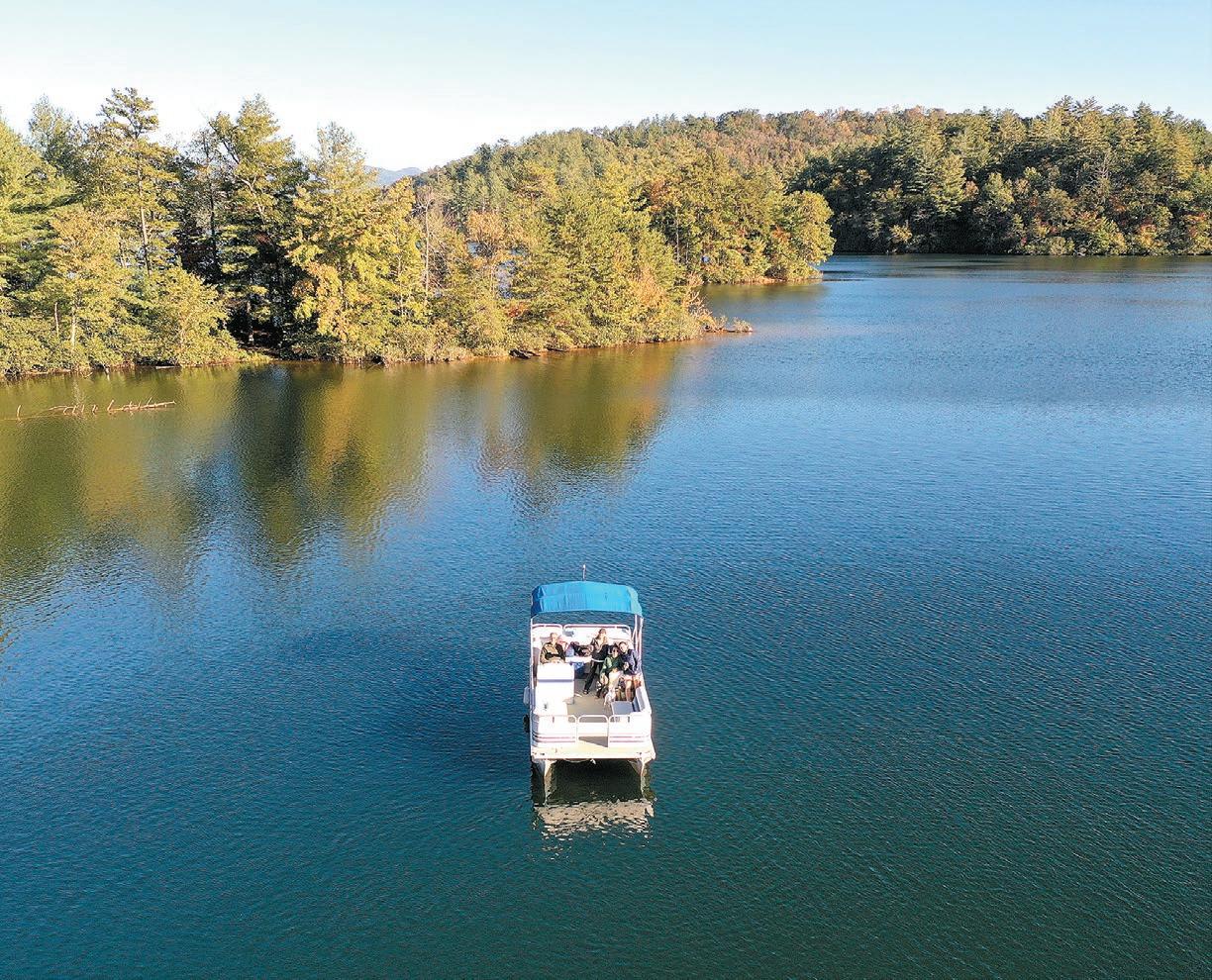







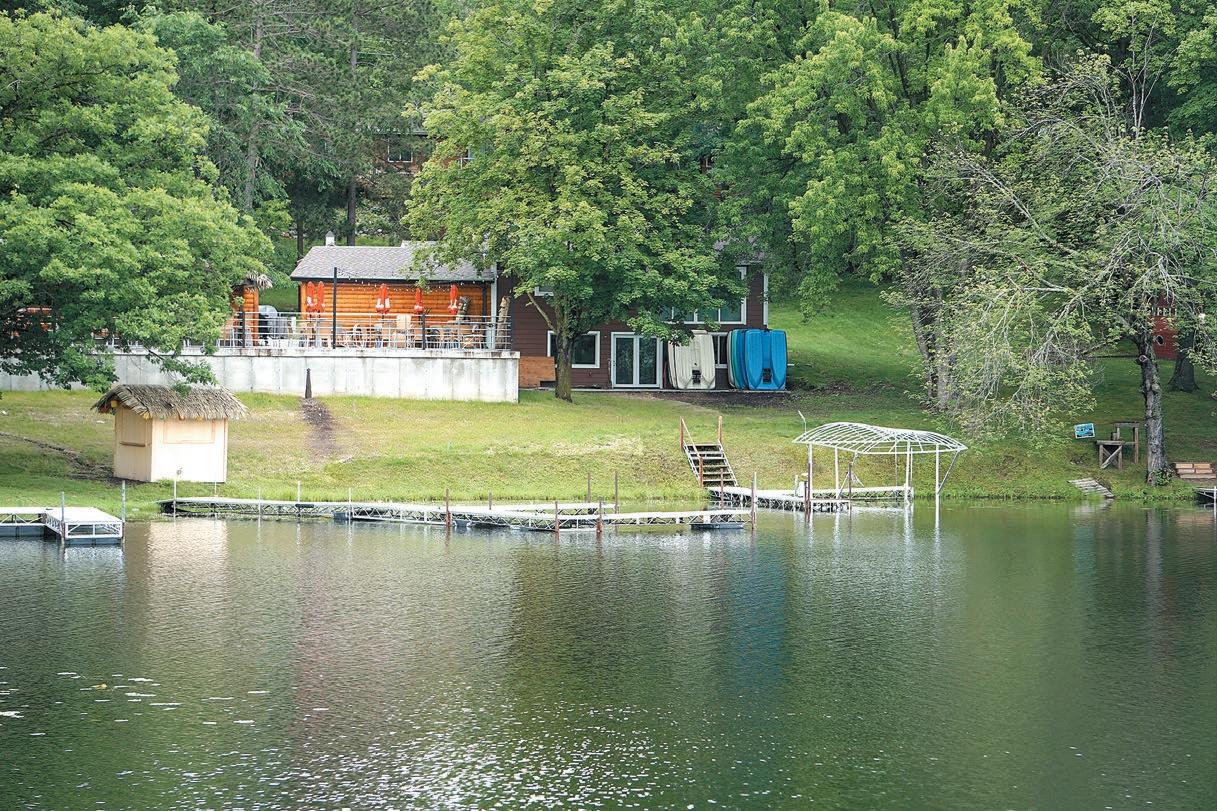
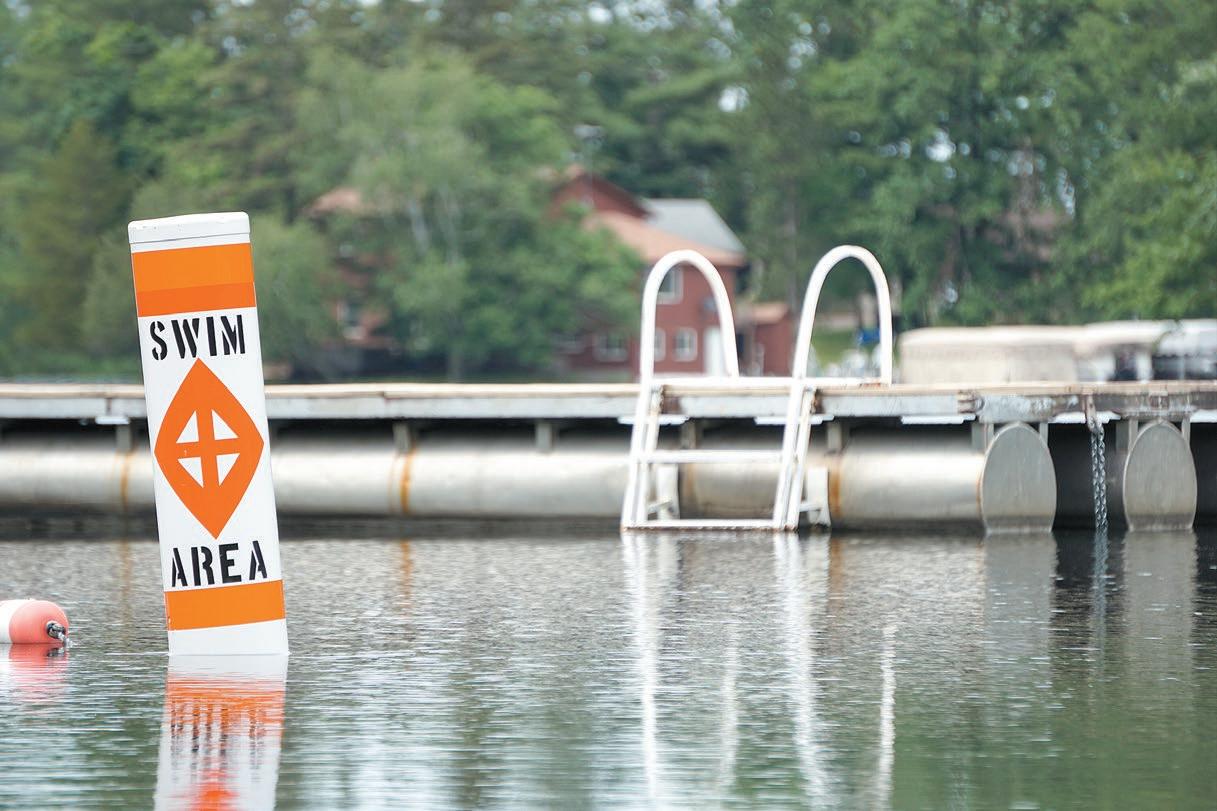
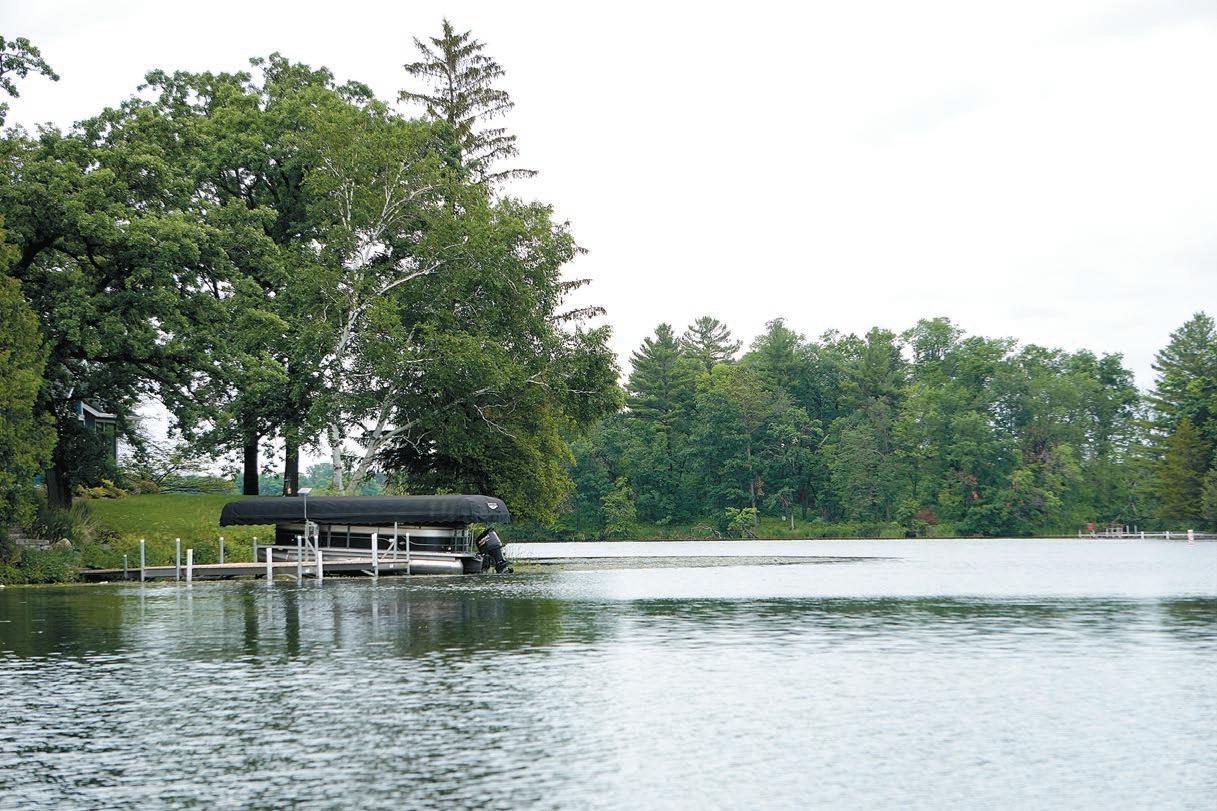

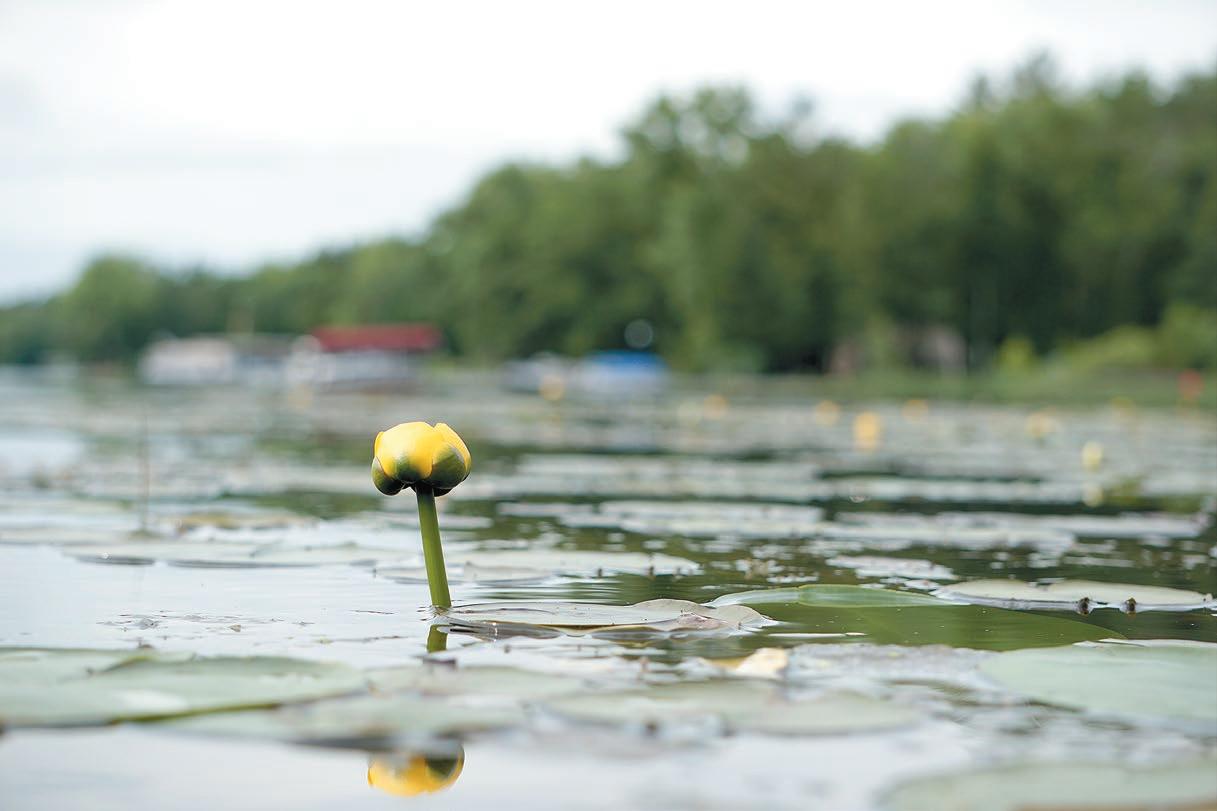
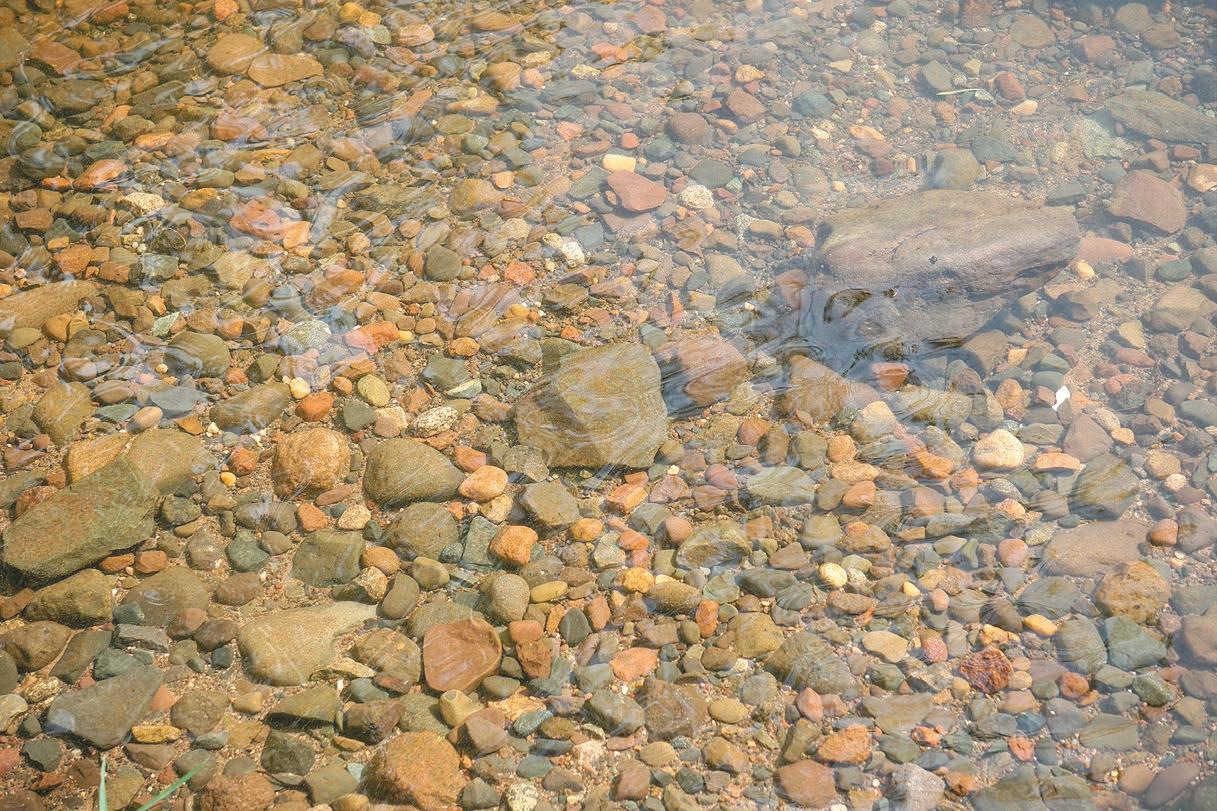

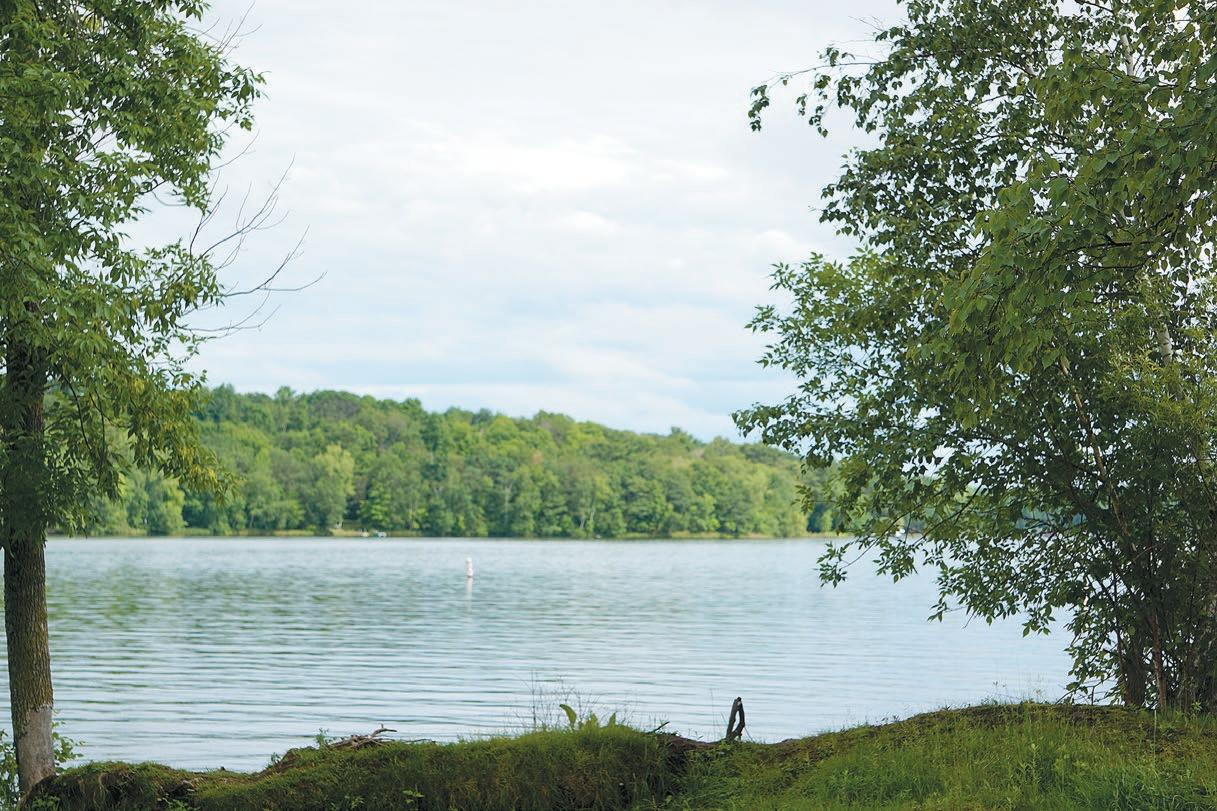
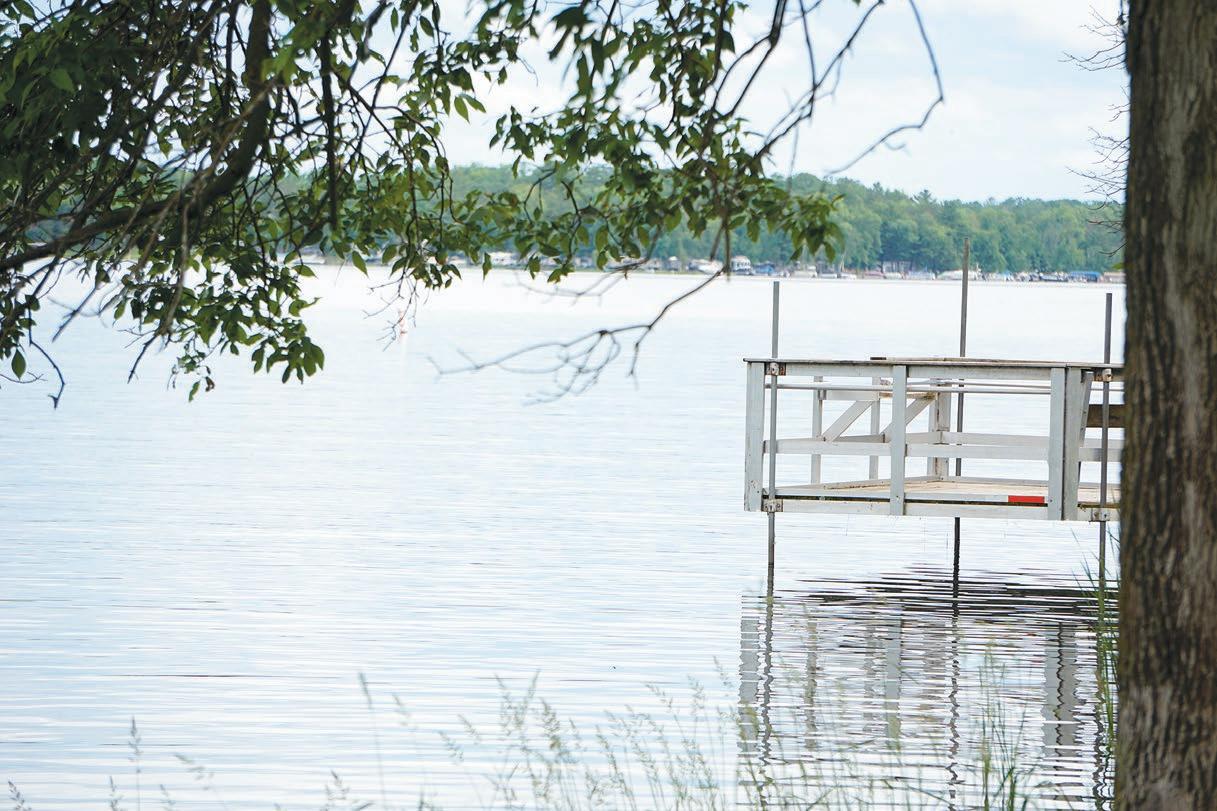


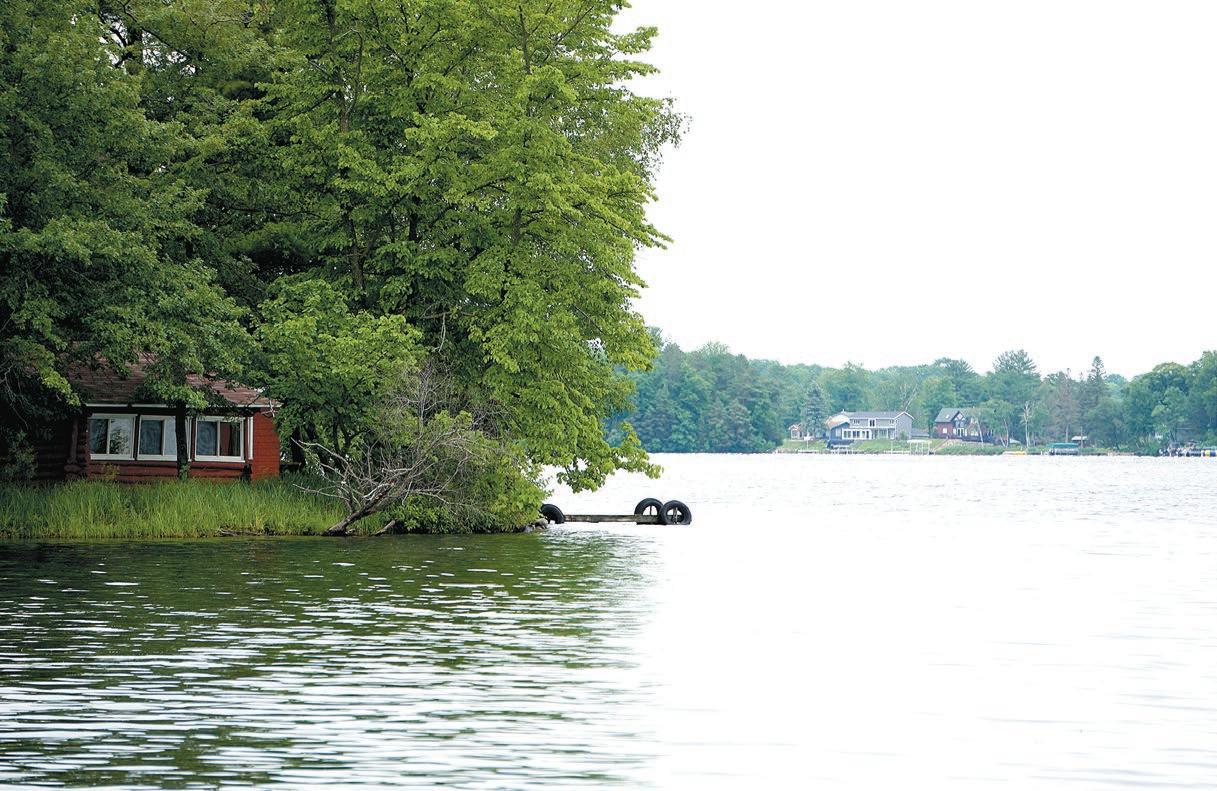
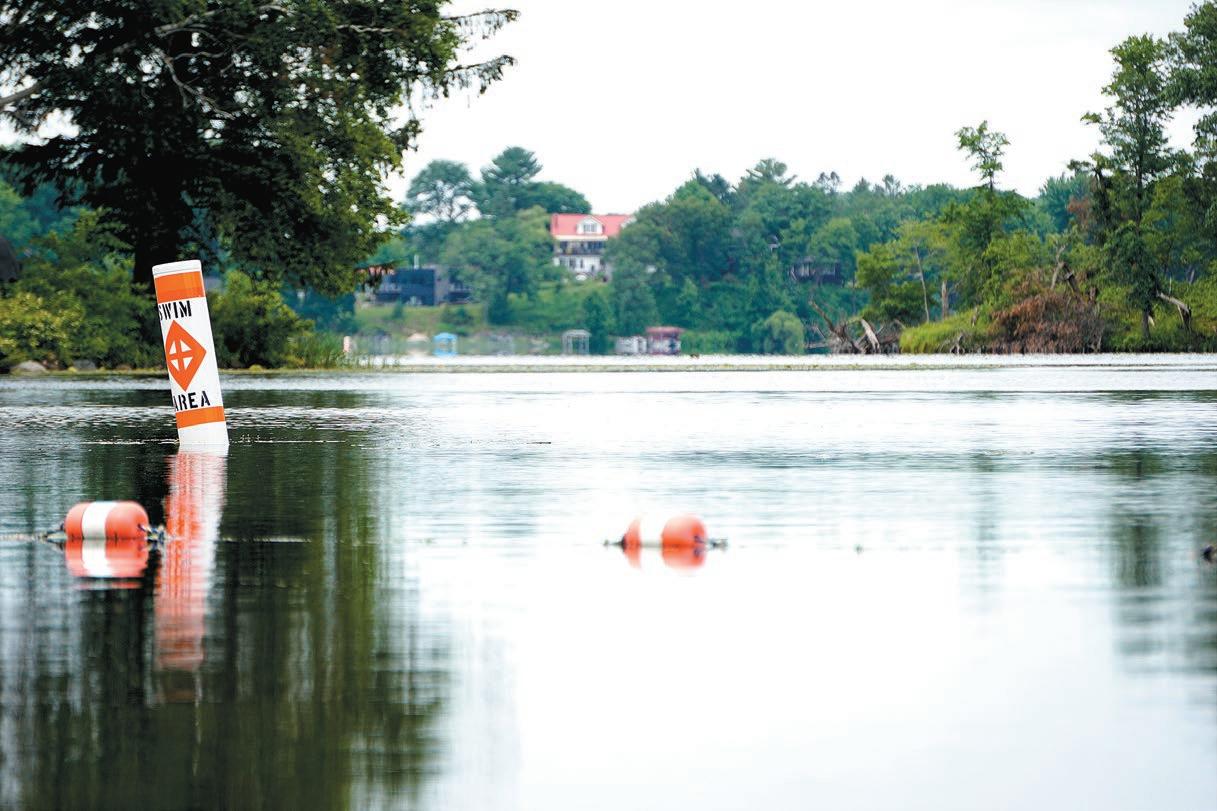
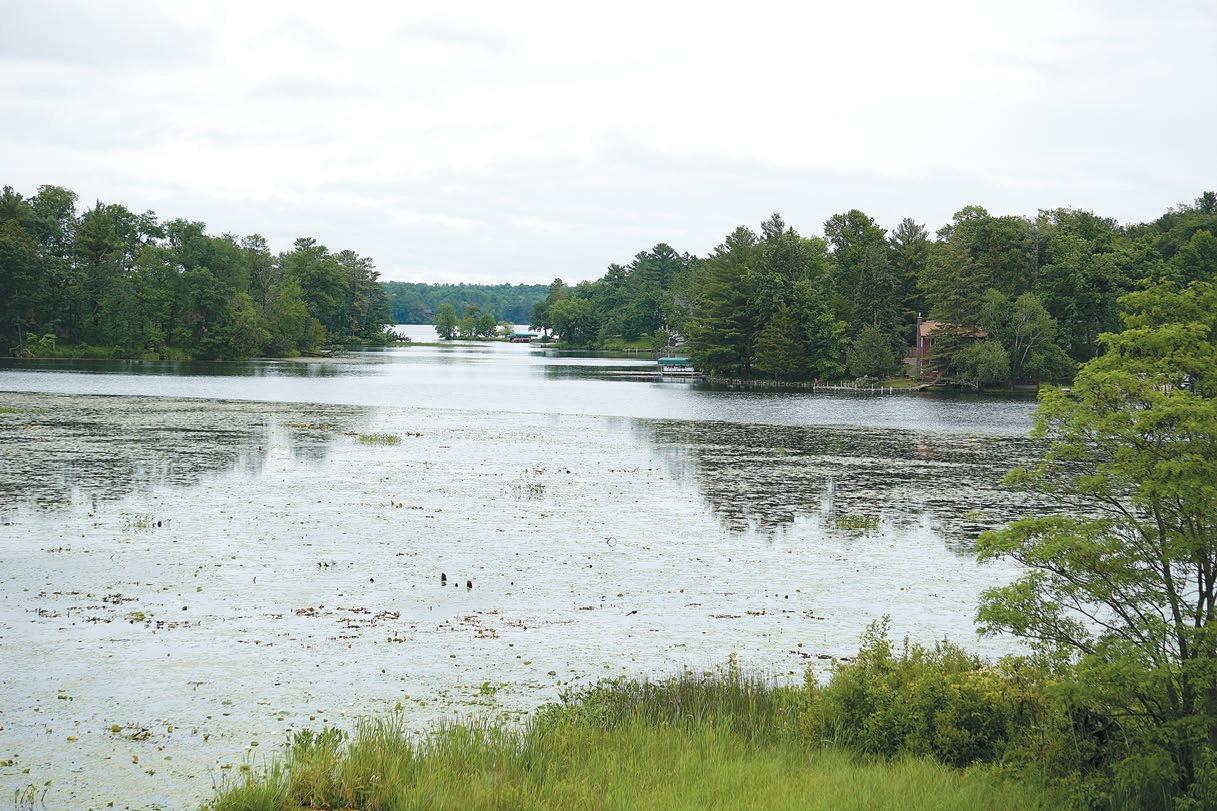

St. Croix, Pierce, and Polk
Those moving to Western Wisconsin at any time in the near future will join neighbors experiencing living in an area with some of the greatest wealth growth in the state.
Population growth in the area continues to benefit St. Croix, Polk, and Pierce counties, as investment income, property value, and median income over the course of the past 10 years have grown exponentially.
That’s borne out of a recent study published by smartasset.com, which
places Polk, St. Croix, and Pierce counties all within the top four in terms of wealth growth.
St. Croix County, for years recognized as the fastest growing county in the state by population, is ranked first in smartasset’s wealth study, while Pierce and Polk are third and fourth, respectively. That’s out of 72 state counties.
According to the study, the raw growth of the median home value in St. Croix County has increased by
$191,025 over the past decade; the raw growth in median income has gone up by $22,894; and the raw growth in investment income was $8,000.
Pierce County, the state’s thirdleading county in the study, saw a raw growth in median home value at $154,884; a raw growth in median income of $19,115; and a raw growth in investment income at $9,000.
In Polk County (ranked fourth), the raw growth in median home value was $146,743; the raw growth in median income was $19,340; and the raw growth in investment income was
$3,000.
Terry Hauer, the Executive Director of the Polk County Economic Development Corporation, said he wasn’t surprised by the results of the study, but also pointed to continuing issues he said must be addressed so that the area can continue seeing the growth trends in wealth. But he also agreed the area has had much working in its favor to benefit the economic development and growth in wealth.
If you used to get the Laker delivered to your door and have a mailbox approved by the postal service and are not receiving it, please email your address to polkcountylaker@gmail.com and we will add you to the list.

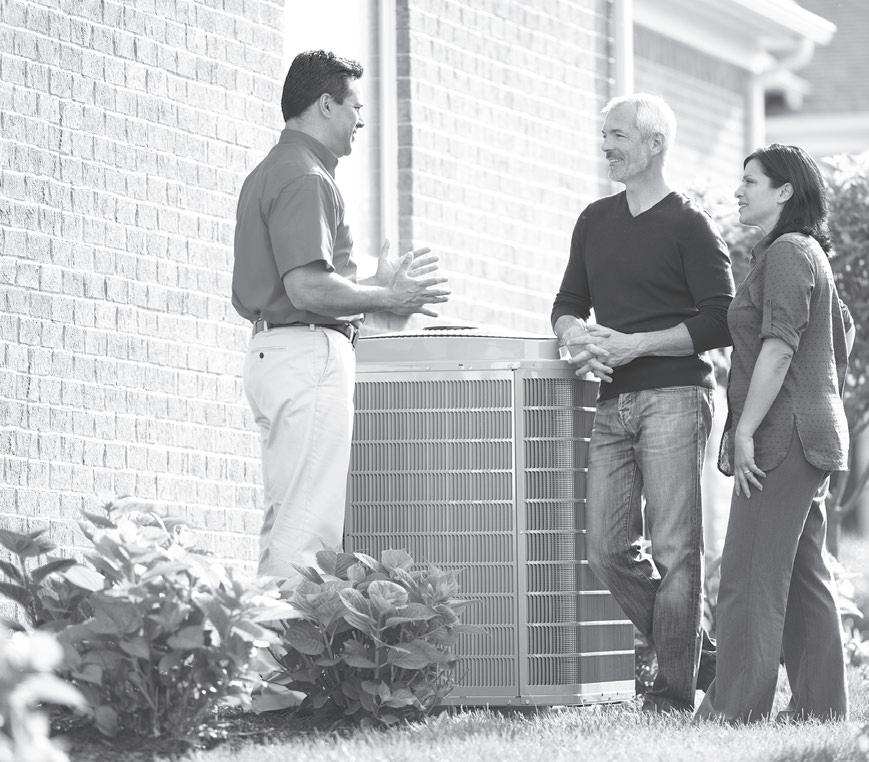
To identify the areas with the greatest increases in wealth, smartasset.com compared all U.S. counties across three metrics: investment income, property value, and median income over the course of 10 years.
They calculated the Investment Income for each county by evenly weighing the Ordinary Dividends, Qualified Dividends, and Net Capital Gains. From there they calculated the change in Median Home Value, and the Median Income for each county, and ranked them on all three metrics.
A Wealth Index was then calculated for all U.S. counties based on a combination of the three metrics, ranking them accordingly to provide a holistic view of which areas of the U.S. are accumulating the most wealth.
They then took the raw change of the three metrics as well as the Wealth Index to rank the counties with the greatest increase in wealth over a 10-year period.
Resources: IRS SOI Tax Statistics, Zillow, Census - American Community Survey
“Polk County, I think is the benefactor of a couple things,” Hauer said. “Number one, and I think all of rural Wisconsin to some degree, has benefited from COVID...from the standpoint that there's a lot more people to be able to come and work remotely now...many that have gravitated away from the Cities and away from the larger metropolitan areas for a more rural setting, a little bit calmer way of life.”
He also said the construction of the new bridge at Stillwater has been a benefit to all of Western Wisconsin, including the three counties ranked so highly in the study.
Hauer described the changeover from generations, housing, and childcare as three areas in which Polk County leaders are focusing long-term plans.
“Part of the thing that a lot of rural America is dealing with, including rural Wisconsin, is the fact that we have an aging population, where the mortality rate is outpacing the birth rate.
“In 2020, there was a mortality of 582 people in Polk County, and a birth rate of only 422. So that’s an ongoing trend...that’s a negative-160 people that were born into Polk County in 2020.”
As the Baby Boomer population continues to reduce over the next decade, Hauer said the influx of new residents to the area continues to be essential to the growth of wealth.
With area counties continuing to see more population growth, the need for housing and for affordable childcare also rise in importance.
“Polk County-wise, we've seen some tremendous expansion in the businesses that we do have here. Which, to me, is an awesome indicator, because not only have we been able to attract some new business into the area from Minnesota, but those that have established here are continuing to invest here, which is a great economic indicator.”
In addition to the business growth comes the need for more housing, which, Hauer said, also brings about the increasing need for child care – with all of it adding to the overall wealth of the area.

“We're finally seeing some housing relief here in Polk County, there's some great projects under way or proposed at this point that are soon to be under way,” Hauer said. “So, I think we’re starting to see a little bit of relief on the housing front, because it doesn't matter how great of an attraction tool you might have, if you can't find a place that’s right for your family or for you to live...,” Hauer said.
Childcare, Hauer said, is the third priority “on just about everyone's agenda when it comes to sustainable workforce.
“Even local employers are looking at developing their own solutions. So, they don't want to own childcare, but they would love to be able to have the resources to maybe build the center, if they can find somebody to come in and manage it. And then they would offer that as an incentive to their workforce and also to the local community.”
Melissa Meschke, the St. Croix Economic Development Corporation Executive Director, said the population and business increases in the county have come somewhat organically.
Being located literally minutes from the Minneapolis-St. Paul Metropolitan Area, “The county is projected to continue growing in population, jobs, and business starts. This is multifactored with our high quality of life and access to Twin Cities amenities - without needing to live in a big city,” Meschke said.
She also points to the county’s
assets that seem to continue to act as a magnet for Minnesotans.
“I see several assets as it relates to high quality of life that will continue to attract new residents and new wealth to the county. St. Croix County hosts many aspects that make it a great place to live, including, but not limited to nationally-recognized school districts, great outdoor amenities, strength in public services, such as libraries and community events, close proximity to the Twin Cities as well as the I-94 corridor. St. Croix County and the greater St. Croix Valley are family-friendly and encourage young families to move into the area.”
Neil Kline is the Executive Director of Family Friendly Workplaces, a 501 C3 nonprofit based in Woodville.
Family Friendly Workplaces assists businesses in addressing workforce shortages, strengthening families, and certifying employers in their efforts at recruitment and retention of talent.
In addressing the issues surrounding workforce and how it affects growth, Kline also spoke about the aging population and its impact.
Specifically addressing the issue as it pertains to Polk County, he said, “Polk County faces a really challenging labor market and for the projectable future, primarily because baby boomers are retiring and we are not having enough kids to replace them.”
“So, folks coming in and the folks going out, and that gives you that net entrance number. In Polk County’s case that...net entrance number has actually been below zero since about 2015. So that means more people are leaving the workforce in Polk County than entering it...so for the better part of a decade and a half or so, the workforce in Polk County has been shrinking.”
Though not as severe as Polk County’s net entrance numbers, St. Croix County is also suffering from a reduction in net entrance.
“They don't go negative like Polk County does, but they are not adding anywhere near the numbers that they were adding back in 2010, for example. I think they - in 2010 - they were adding maybe 500 people a year to the workforce, and now I think it might be somewhere around like 100,” he added.
But despite the population imbalances, the area continues to grow in wealth, a phenomenon that Kline said isn’t that surprising, and has been driven in part by property values.
“I think a lot of the growth in wealth here is attributed to the fact that housing is becoming much more
valuable...that is a function of...supply and demand,” he said.
That fact, Kline said, sets Western Wisconsin up to be “uniquely positioned” in comparison to the rest of the state.
“We are so close to the Twin Cities that we get much more of a spillover effect from them than other places in the state do...if you just look at a map,
there is no one like us, and you can see that in these numbers. I think that has a big effect on it.”
He added that these factors present employers and communities with a new set of challenges that need the attention of area leaders.
So, despite the needs and challenges






area counties have encountered, the growth in wealth is due to a number of factors that continue to have a positive effect on area residents.
“There's no doubt Polk County, and all of Northwestern Wisconsin, has benefited from that extra corridor being a gateway to this area. Economically, that has had a trickle-down effect into Polk County, St. Croix County into Pierce County - Barron County - all of the surrounding counties, really,” Hauer said.
Kline agreed with Hauer’s assessment, while also addressing the wealth study: “The idea that we have all this wealth...in St. Croix and in Polk County – but if the housing and the childcare are not addressed, you know, what good is the wealth? Well, I mean the wealth is still good. I mean, the people who own houses right now are experiencing state-leading wealth increases. That is a good thing. And I don't look at the increase in wealth and go, ‘oh geez, this is creating a problem.’ I think that that problem existed before the median home values would've kind of drawn our attention to it.” ■

